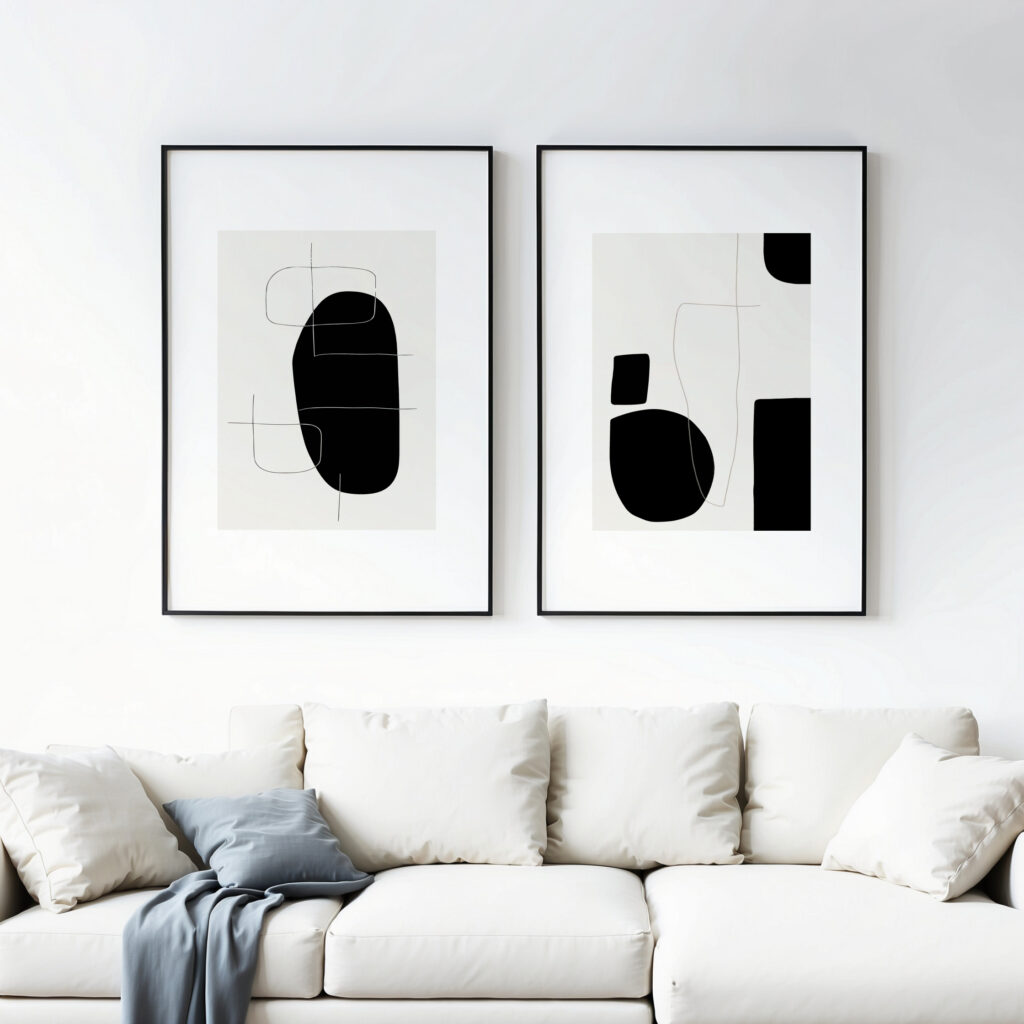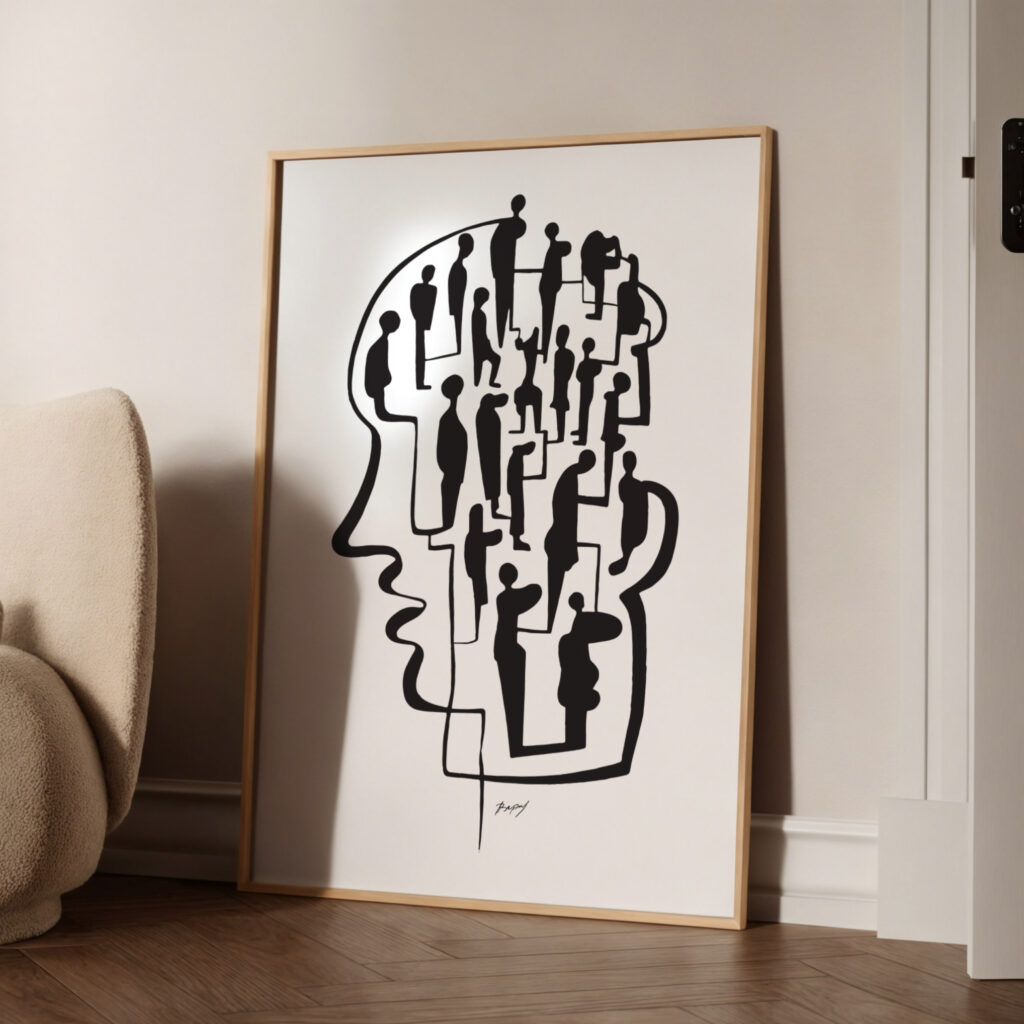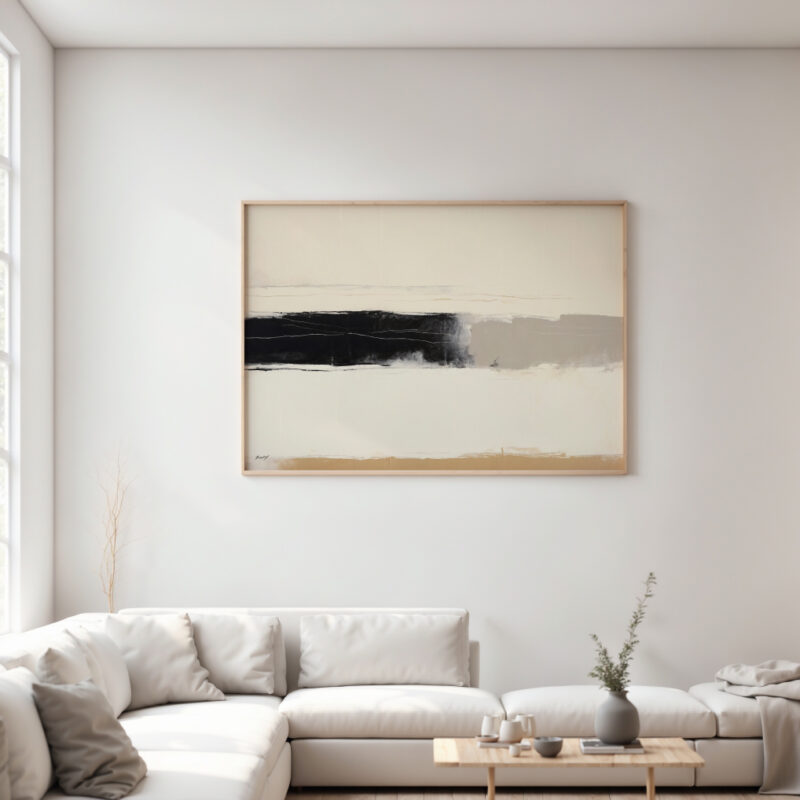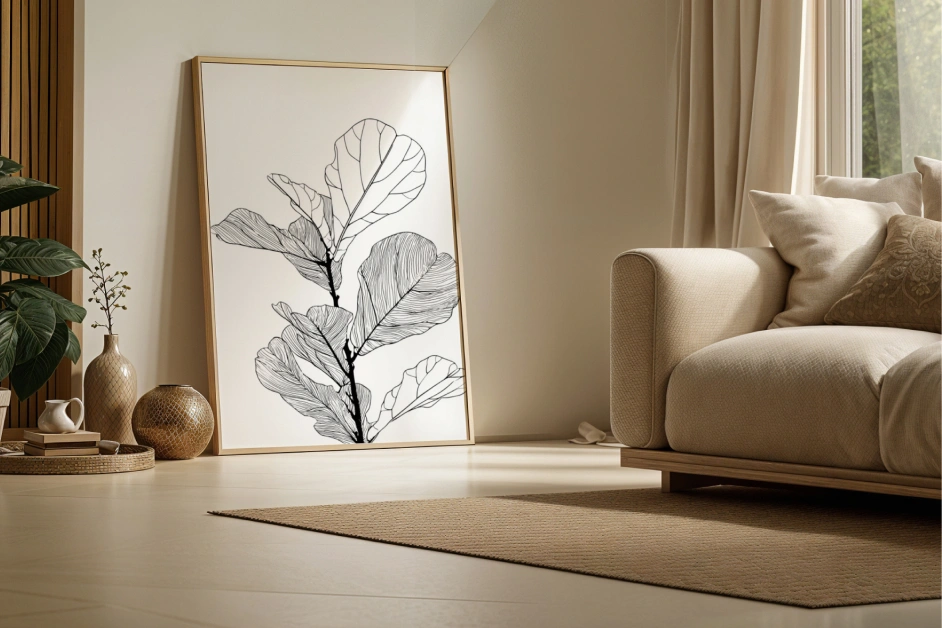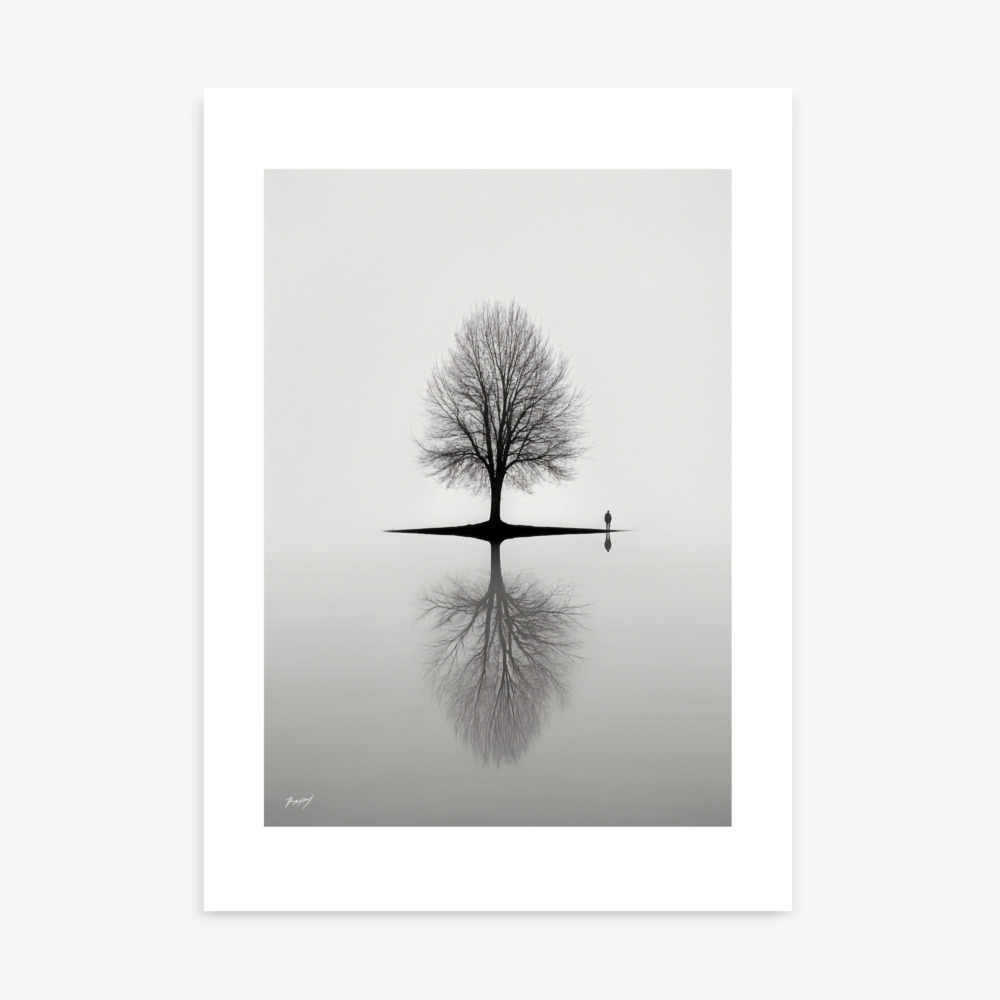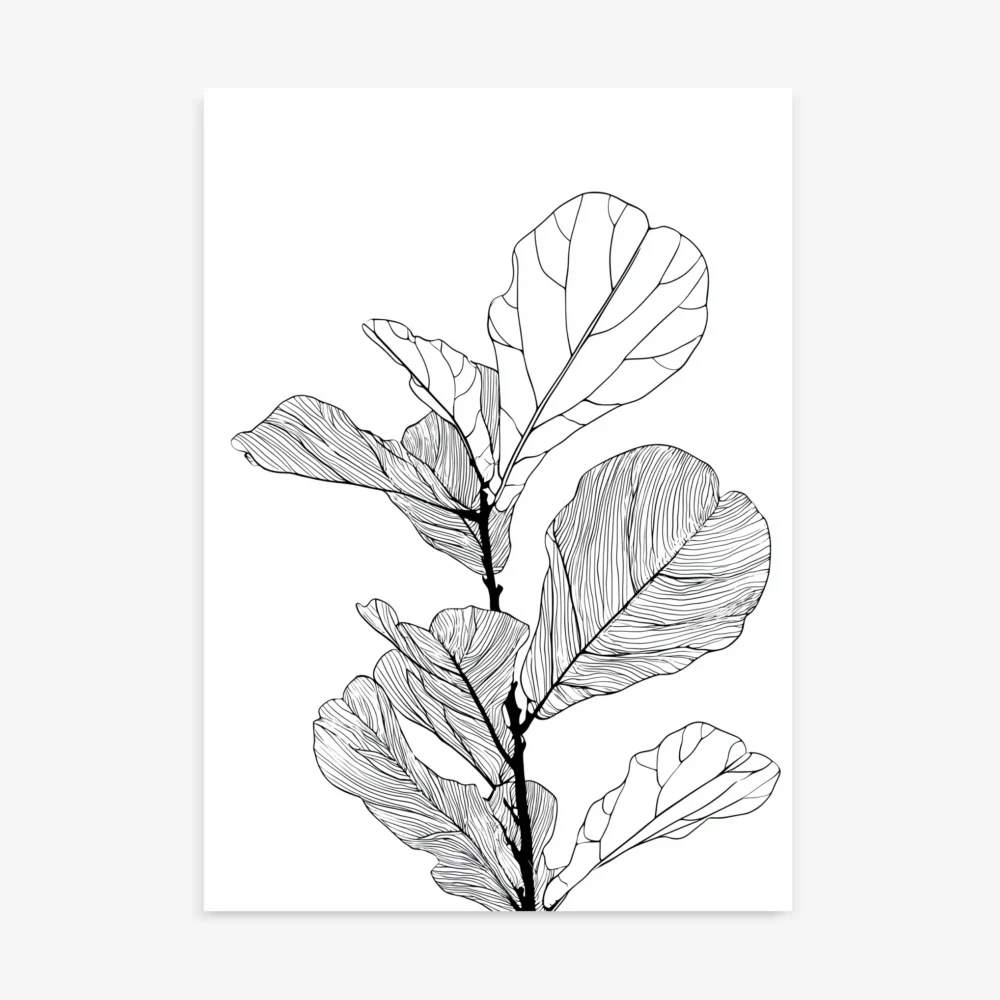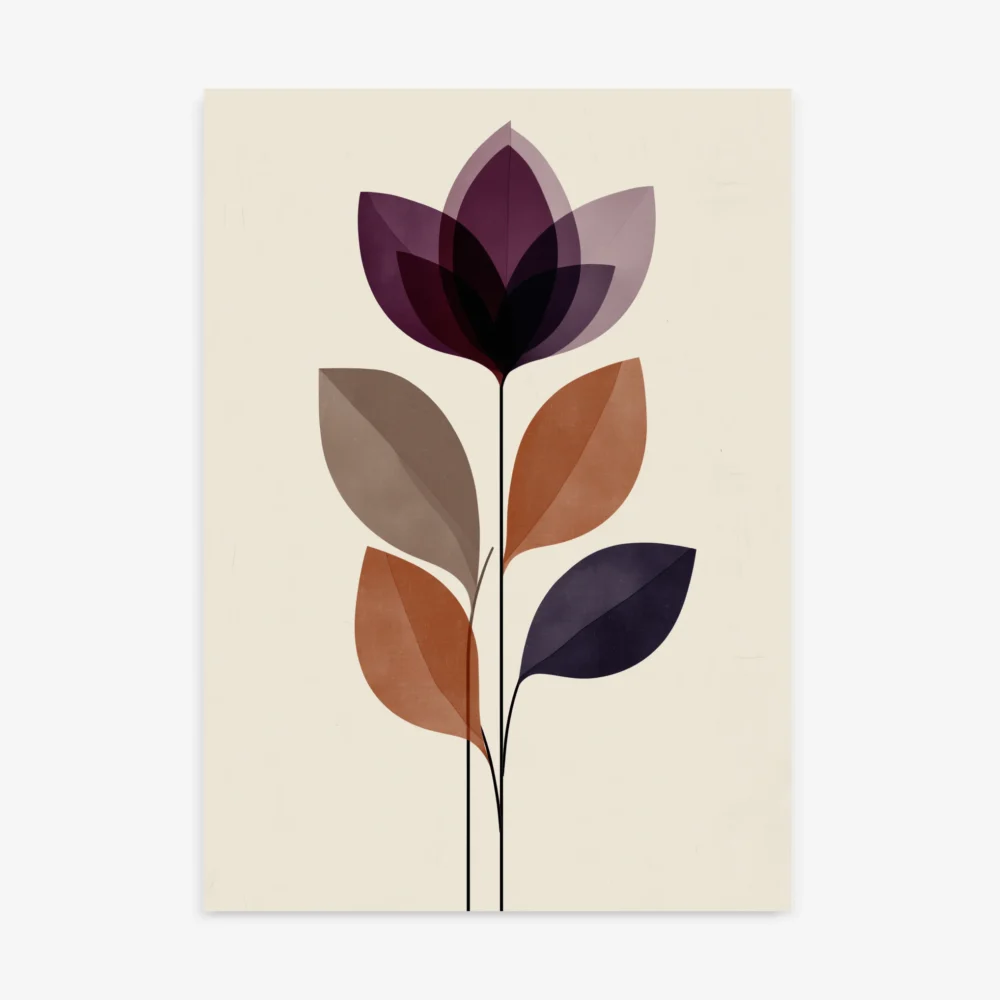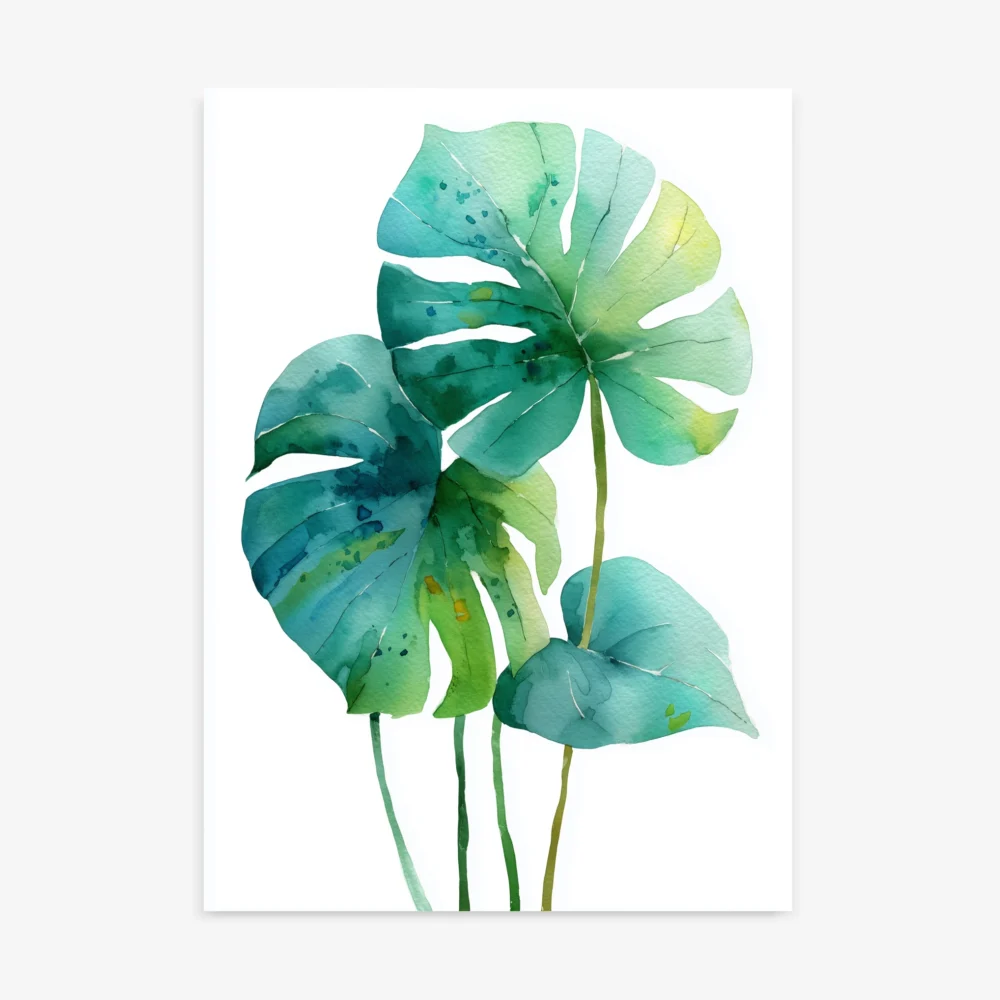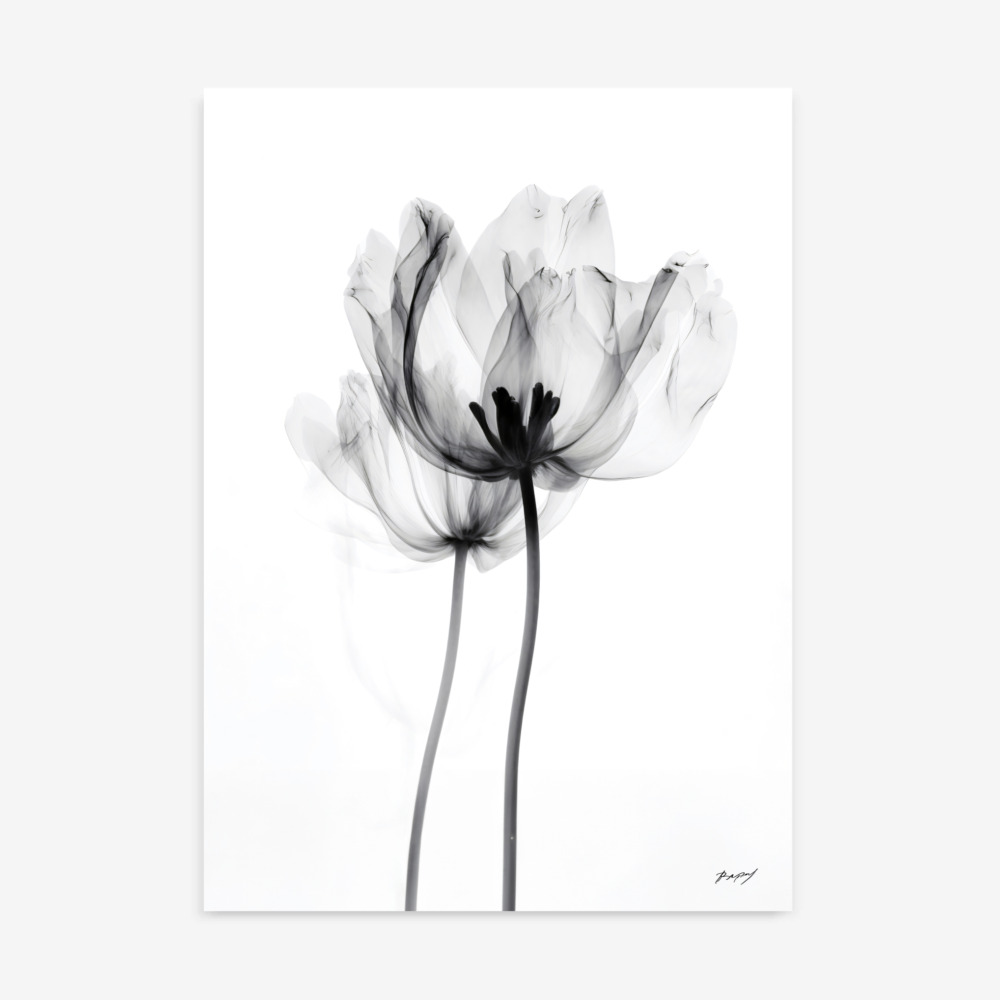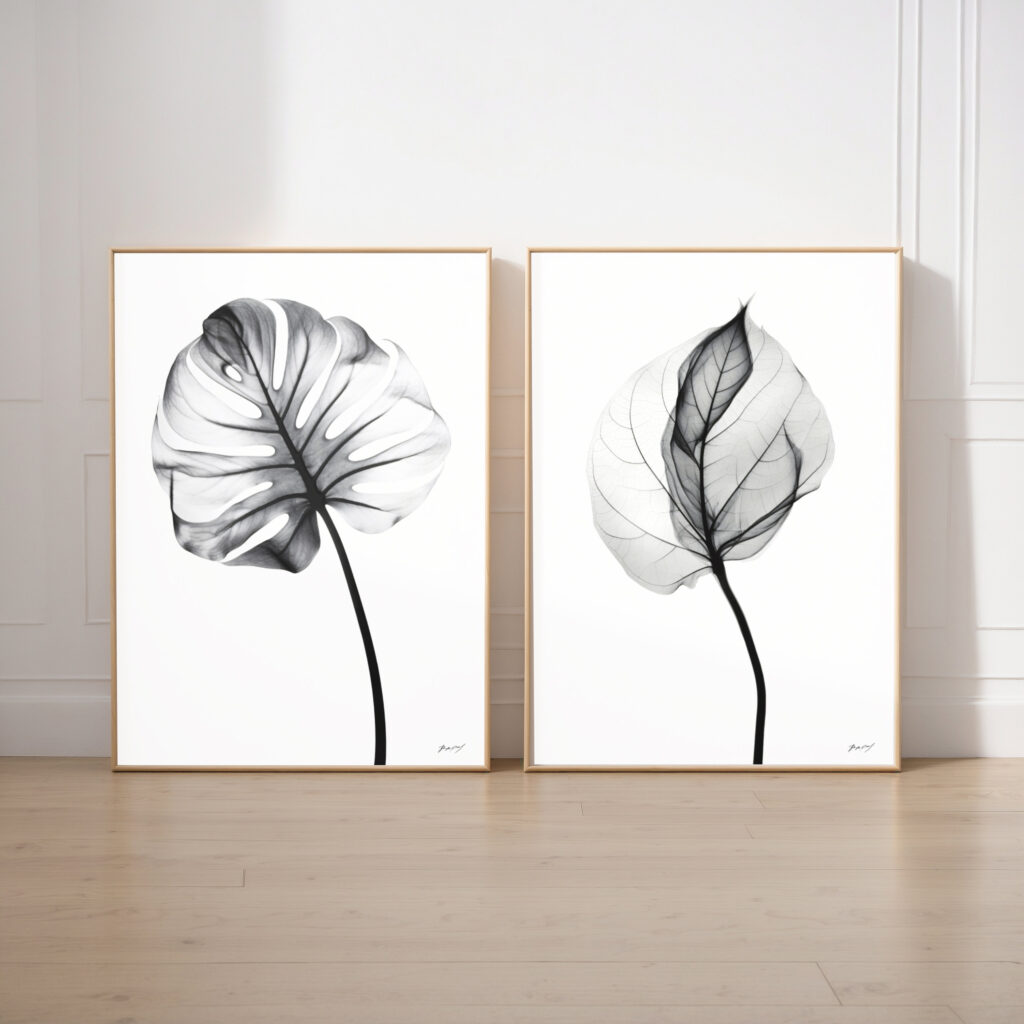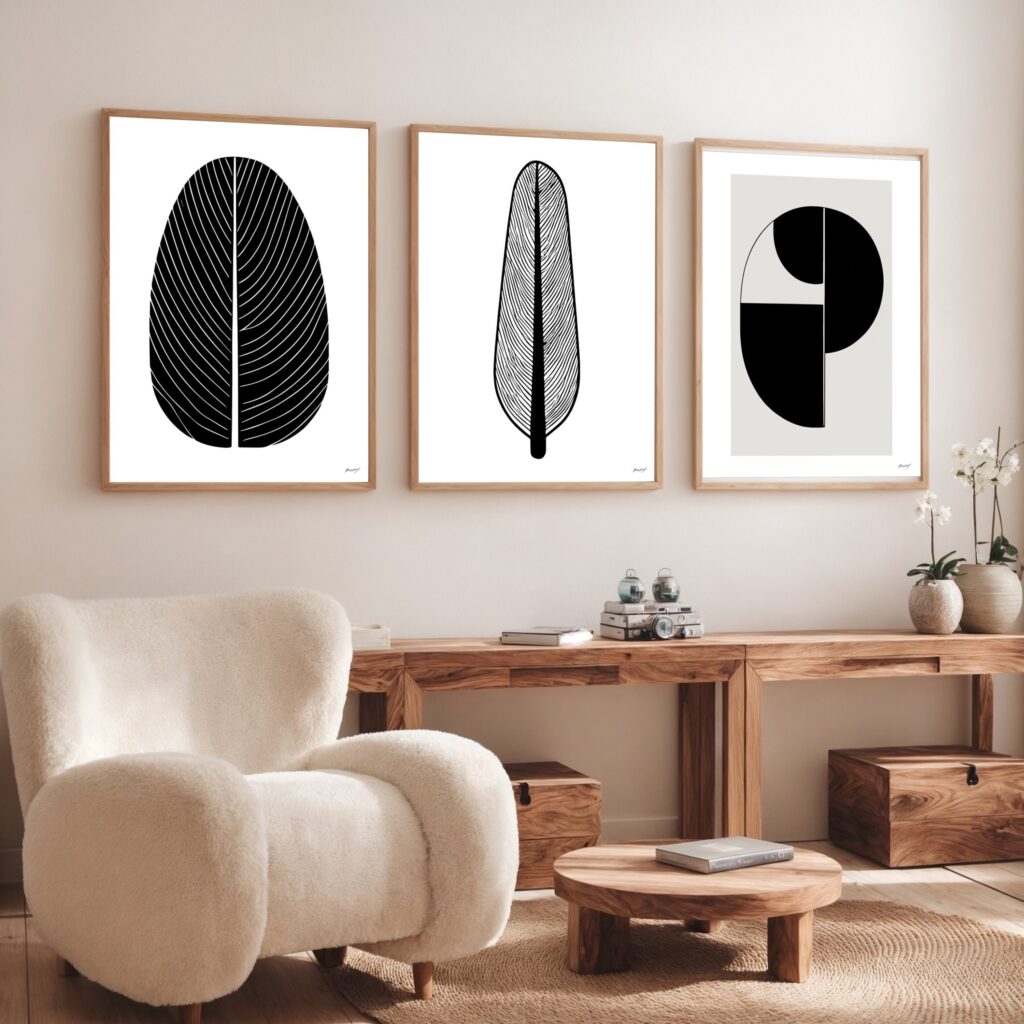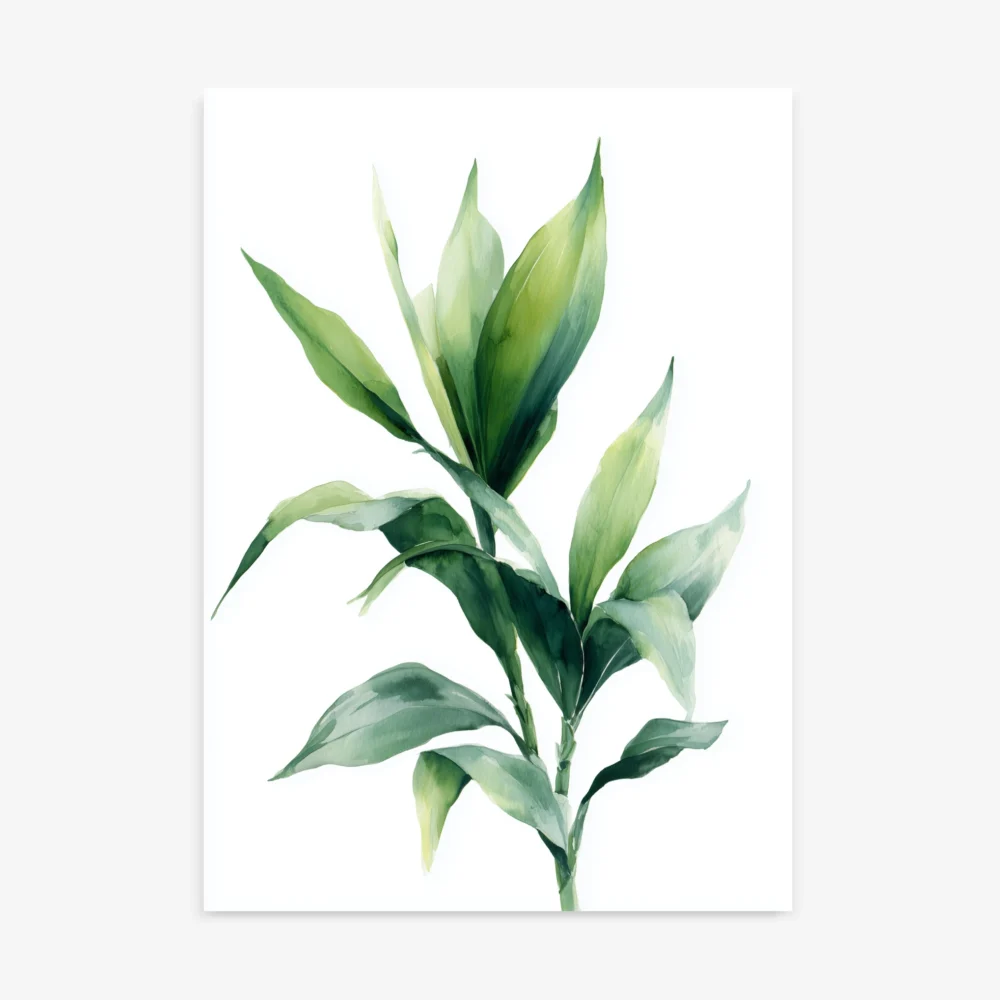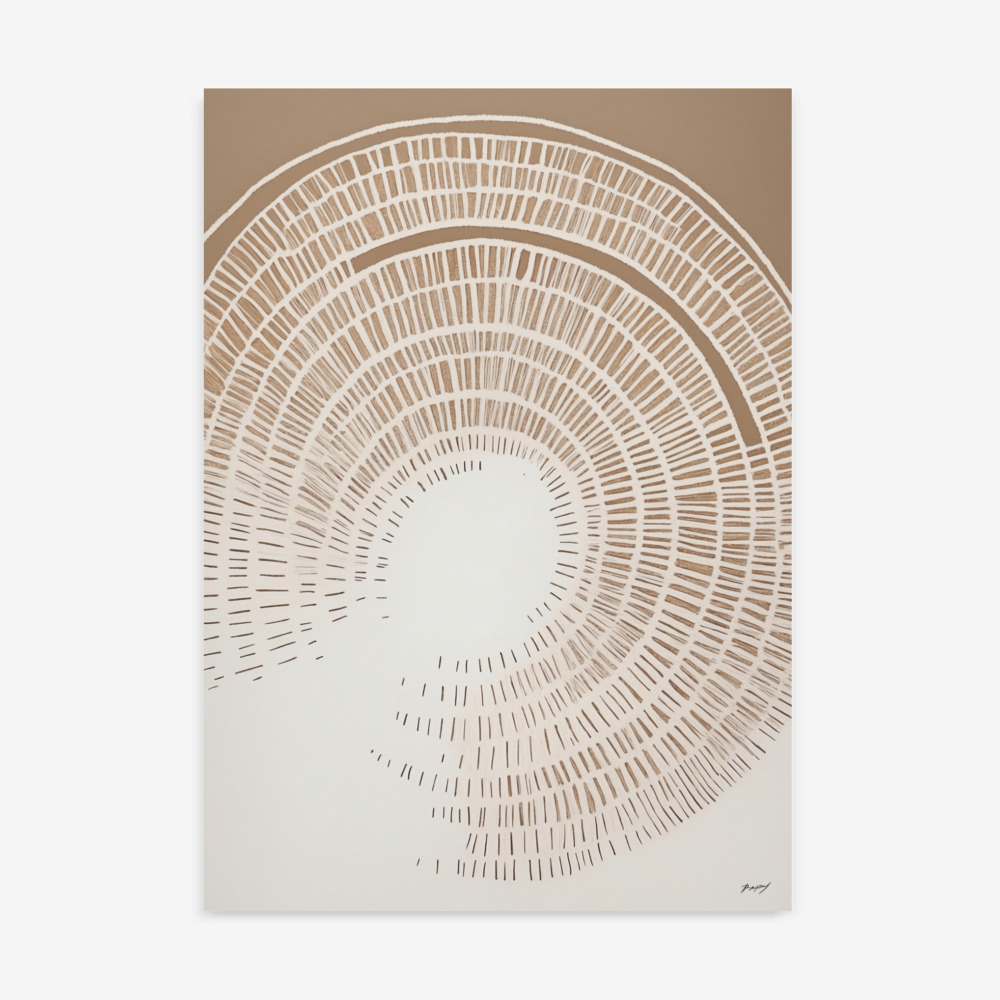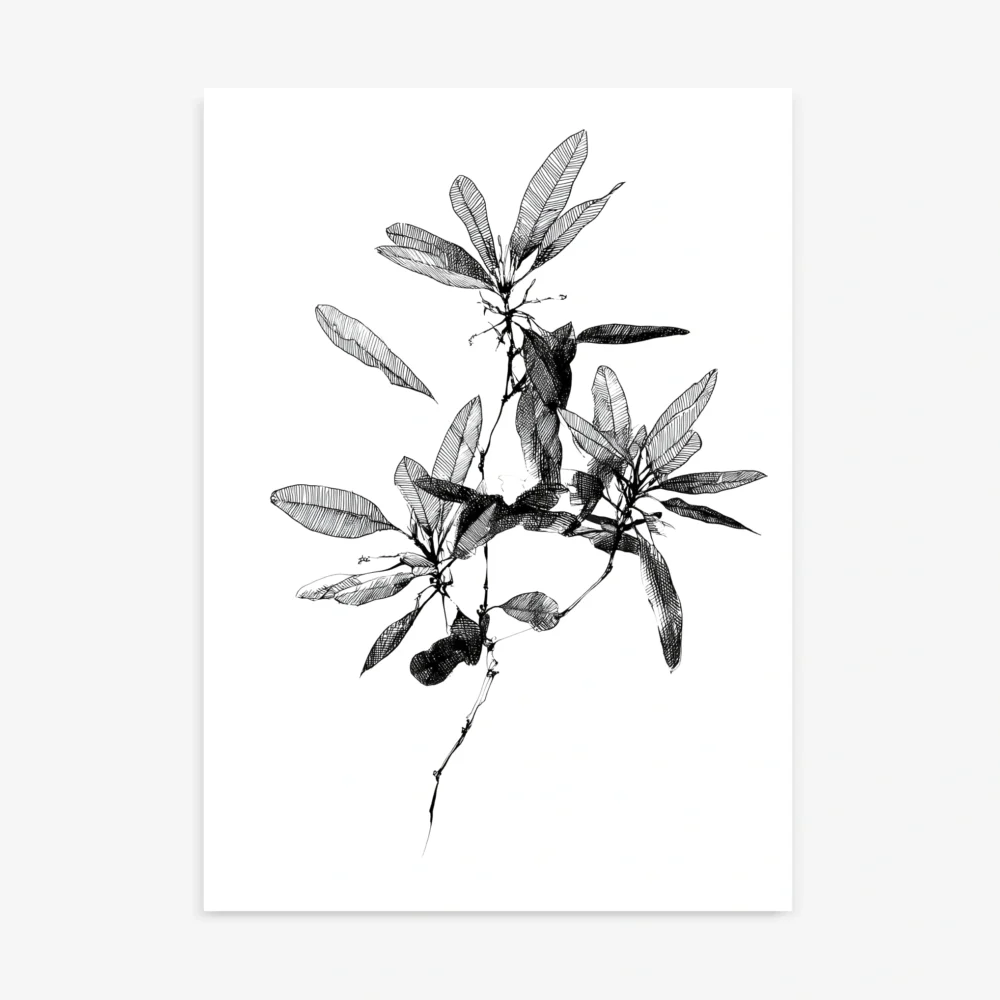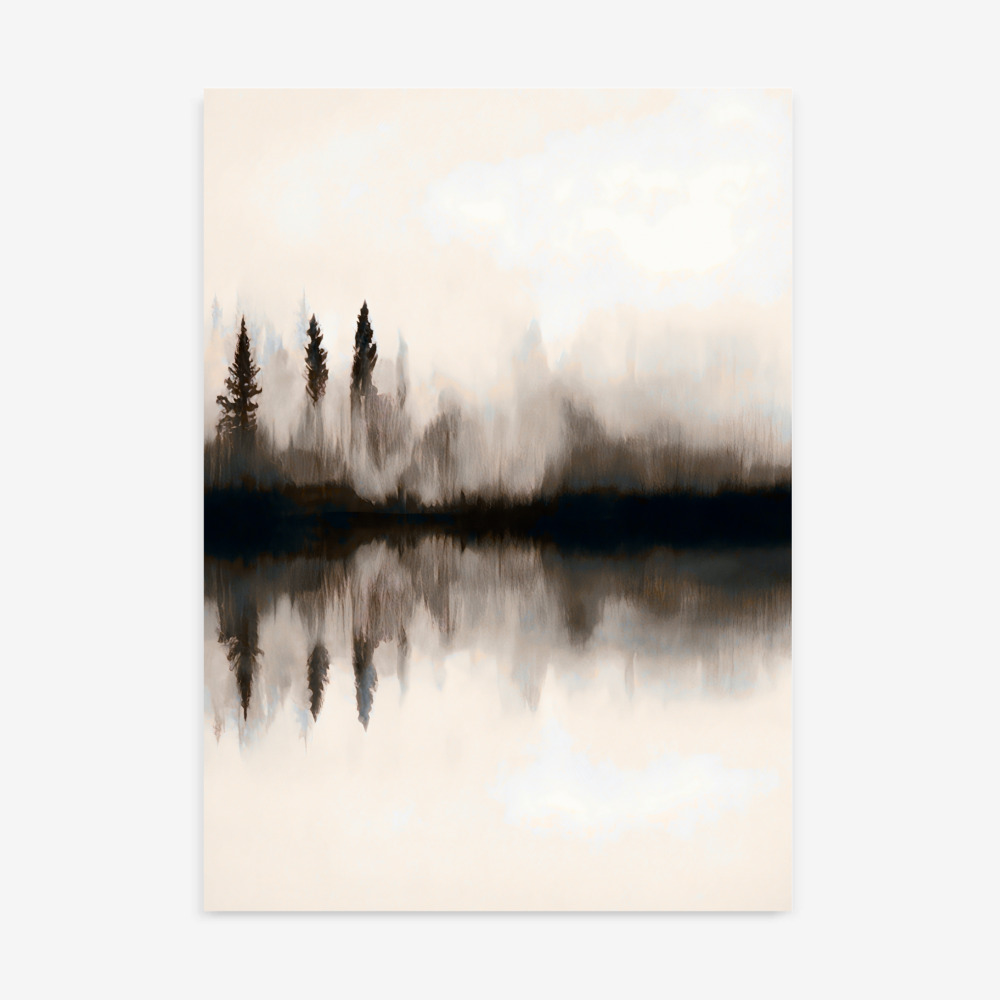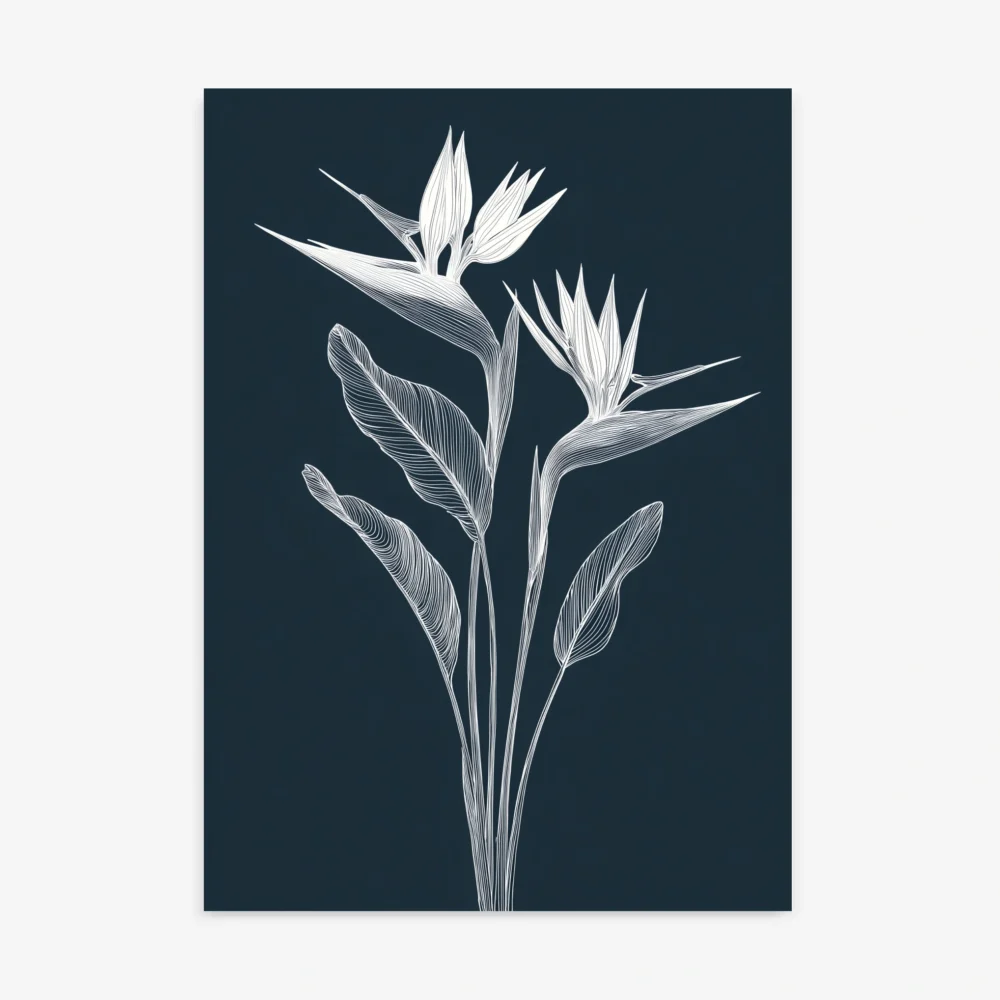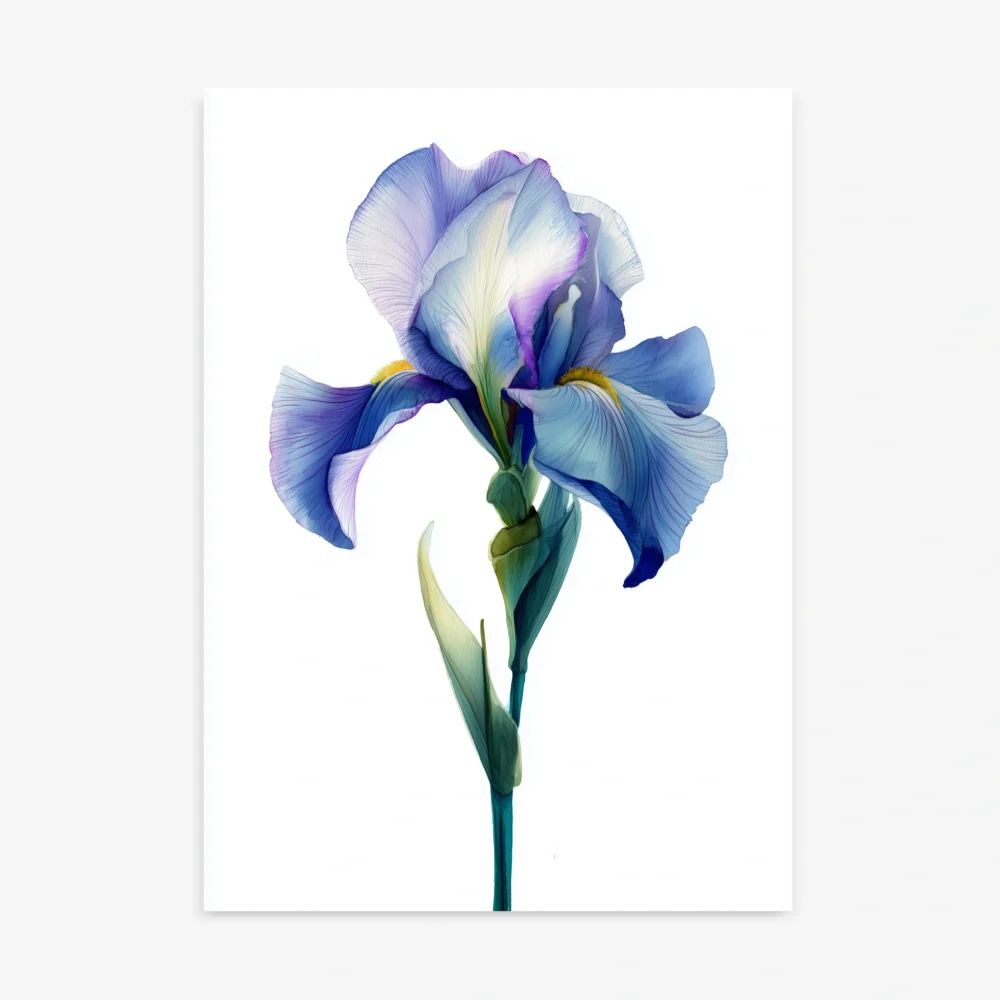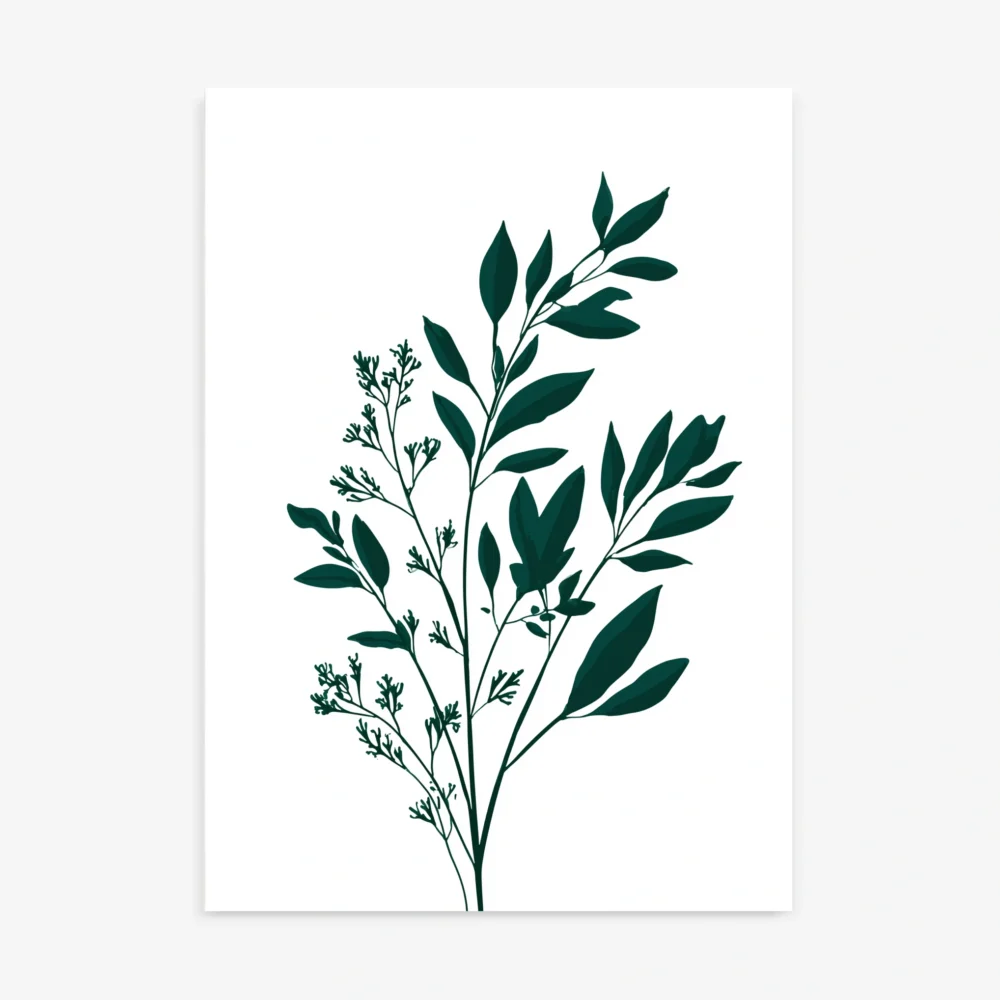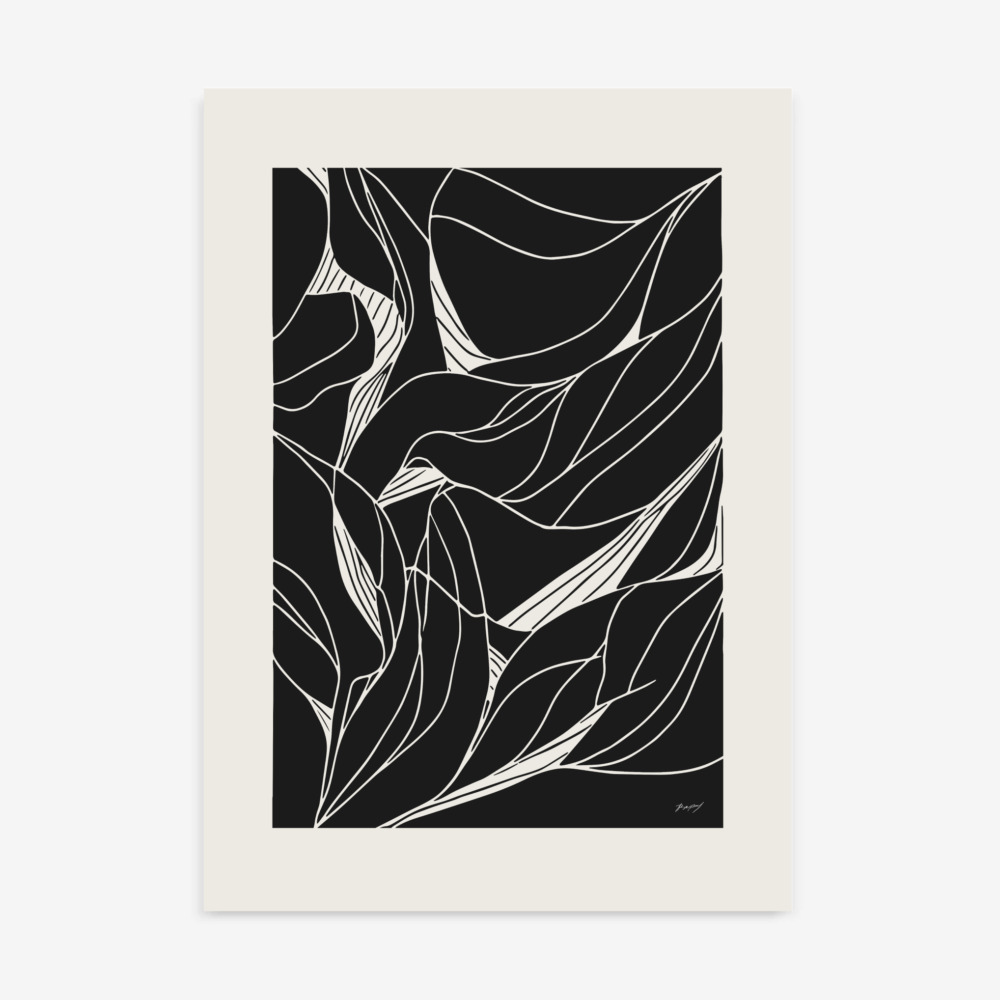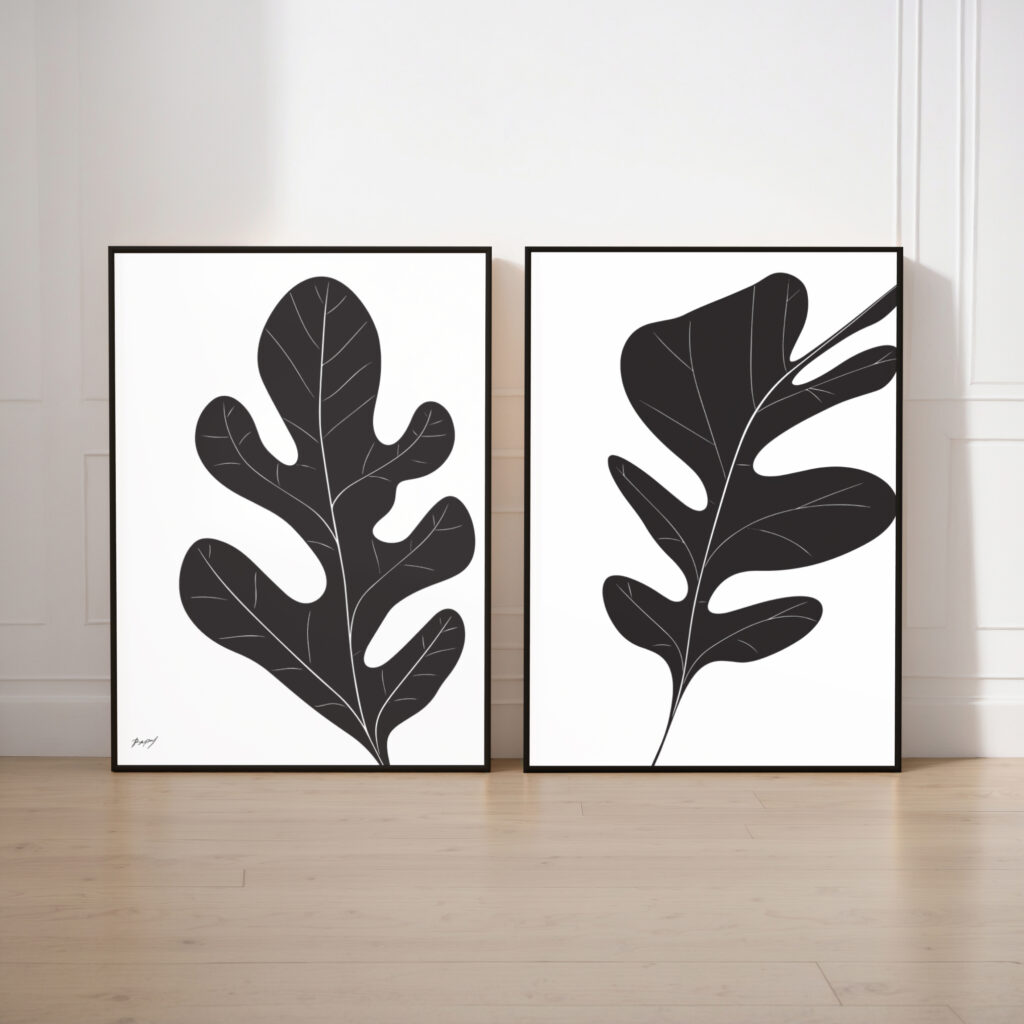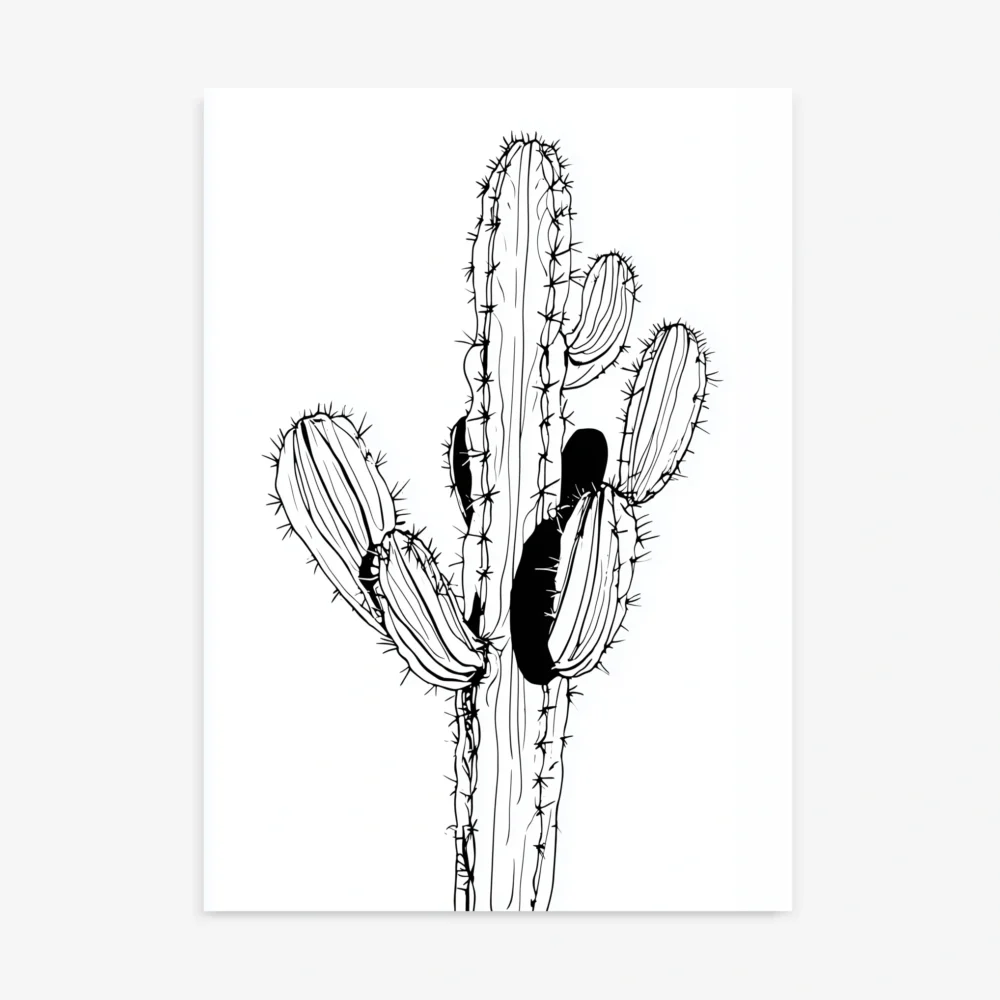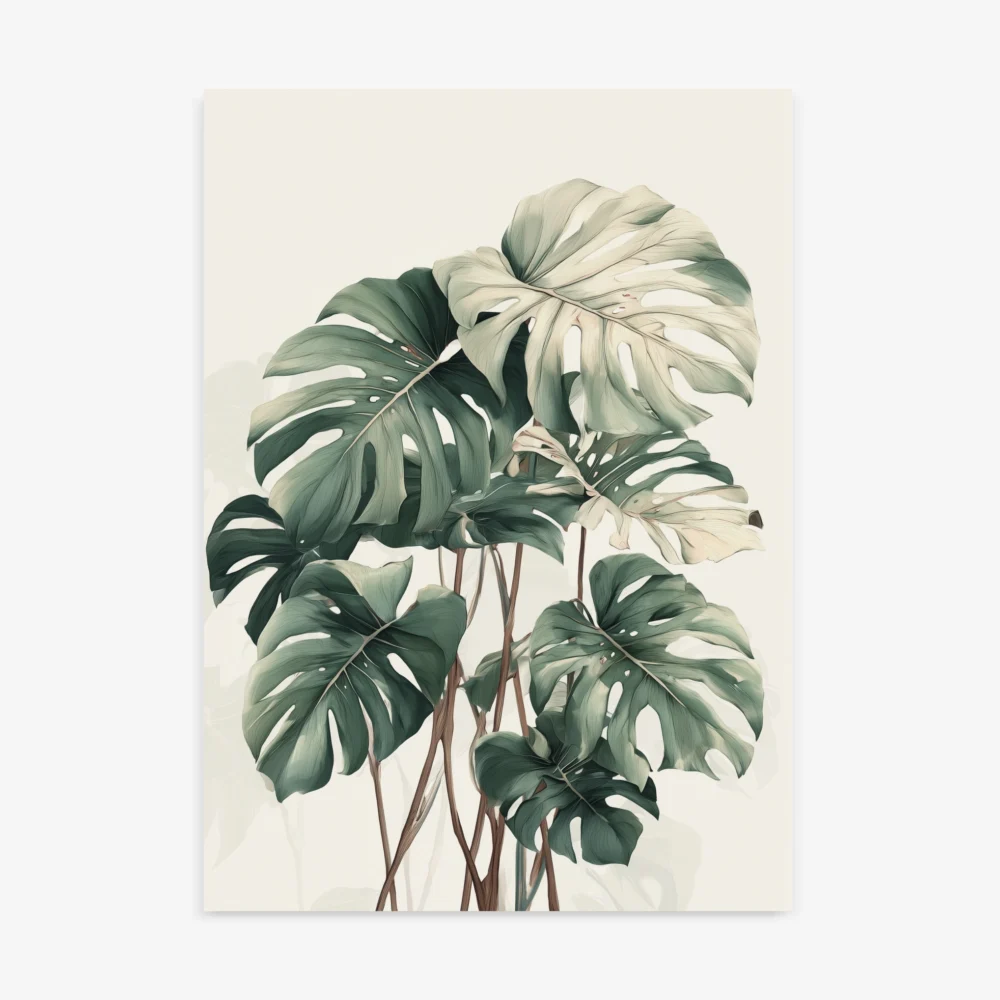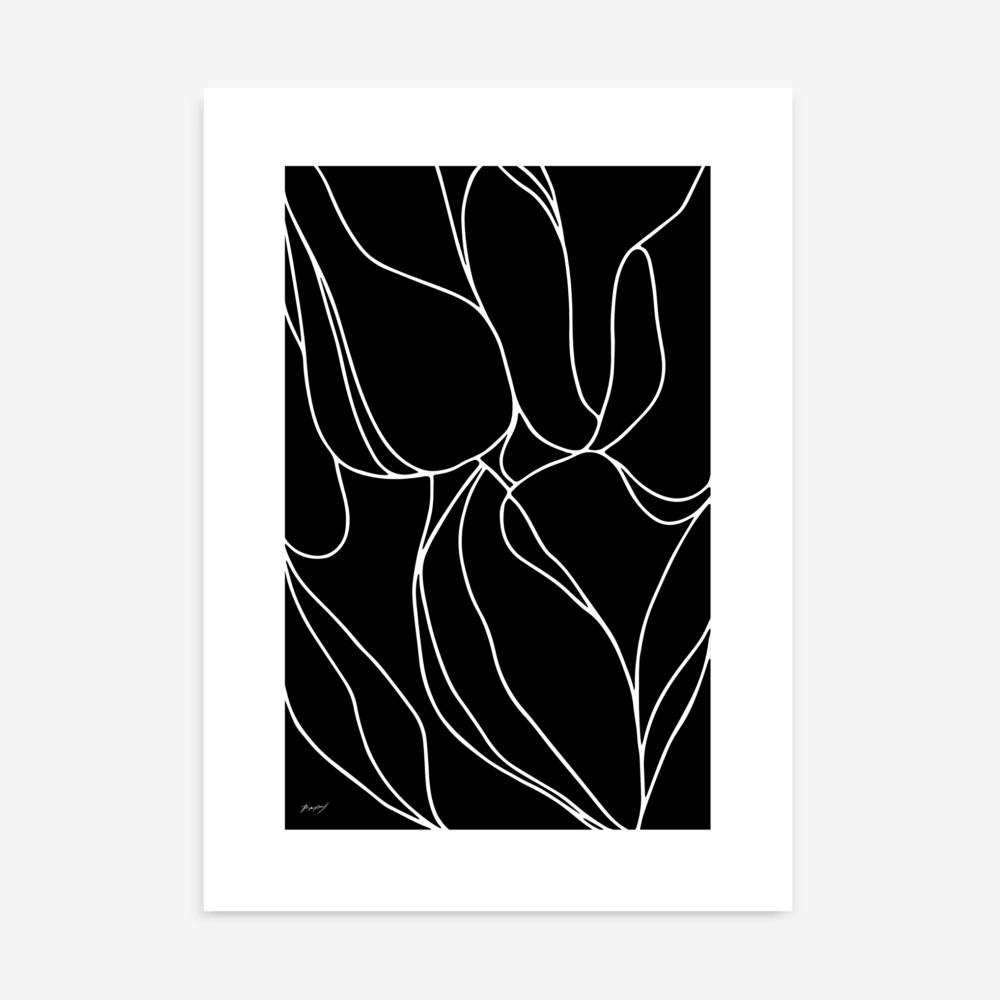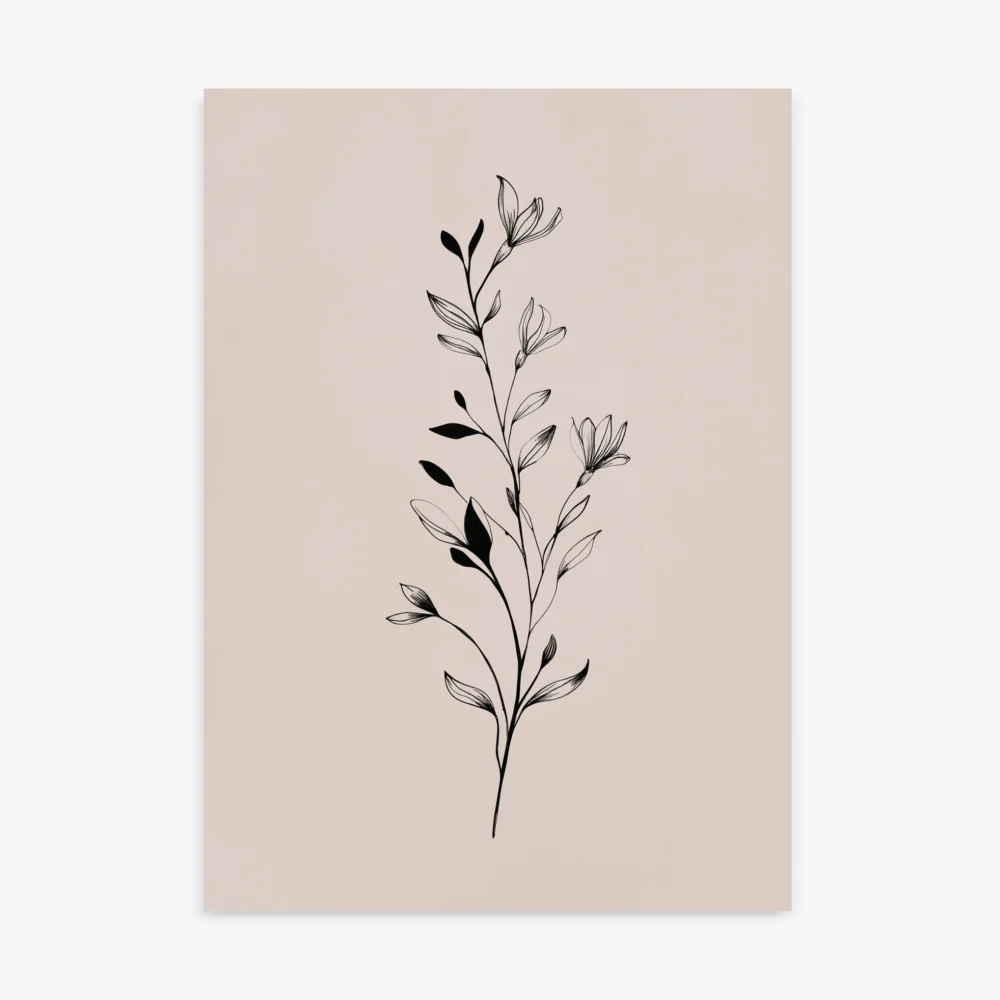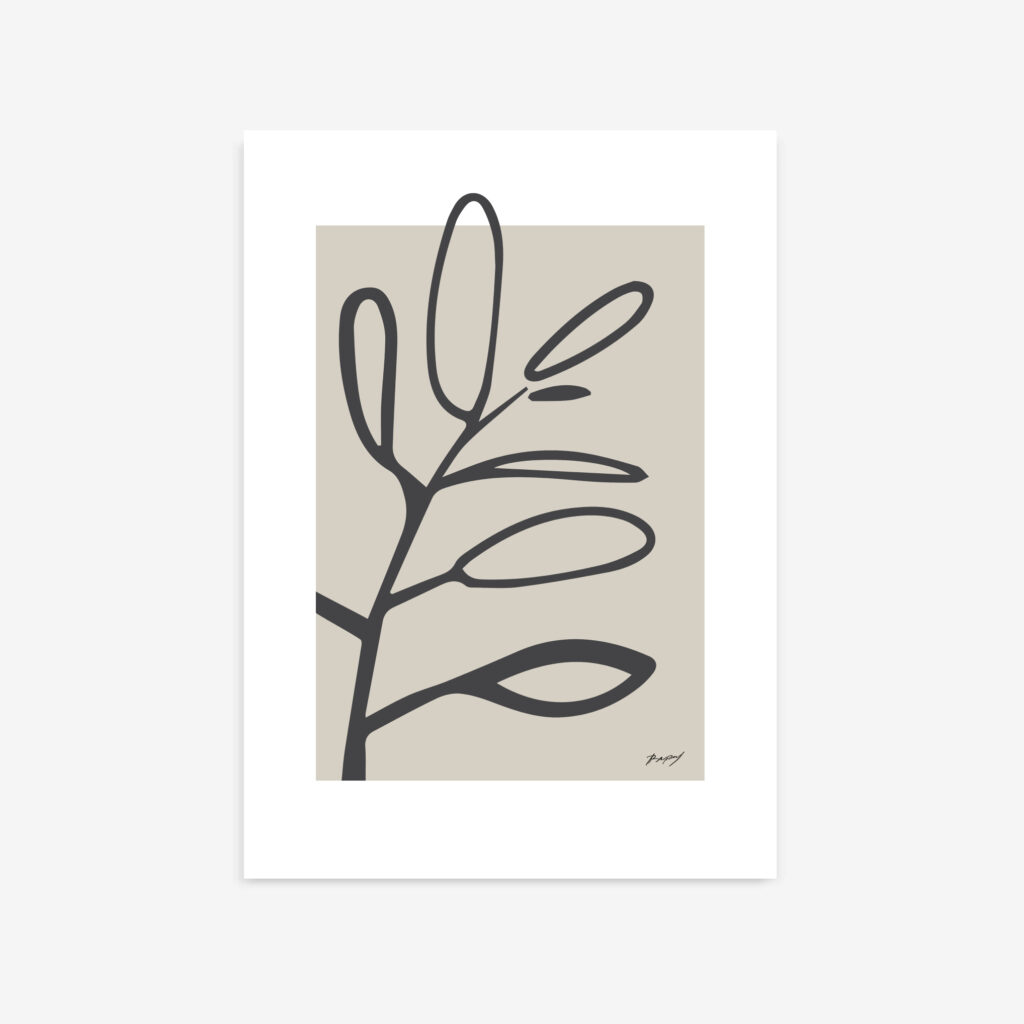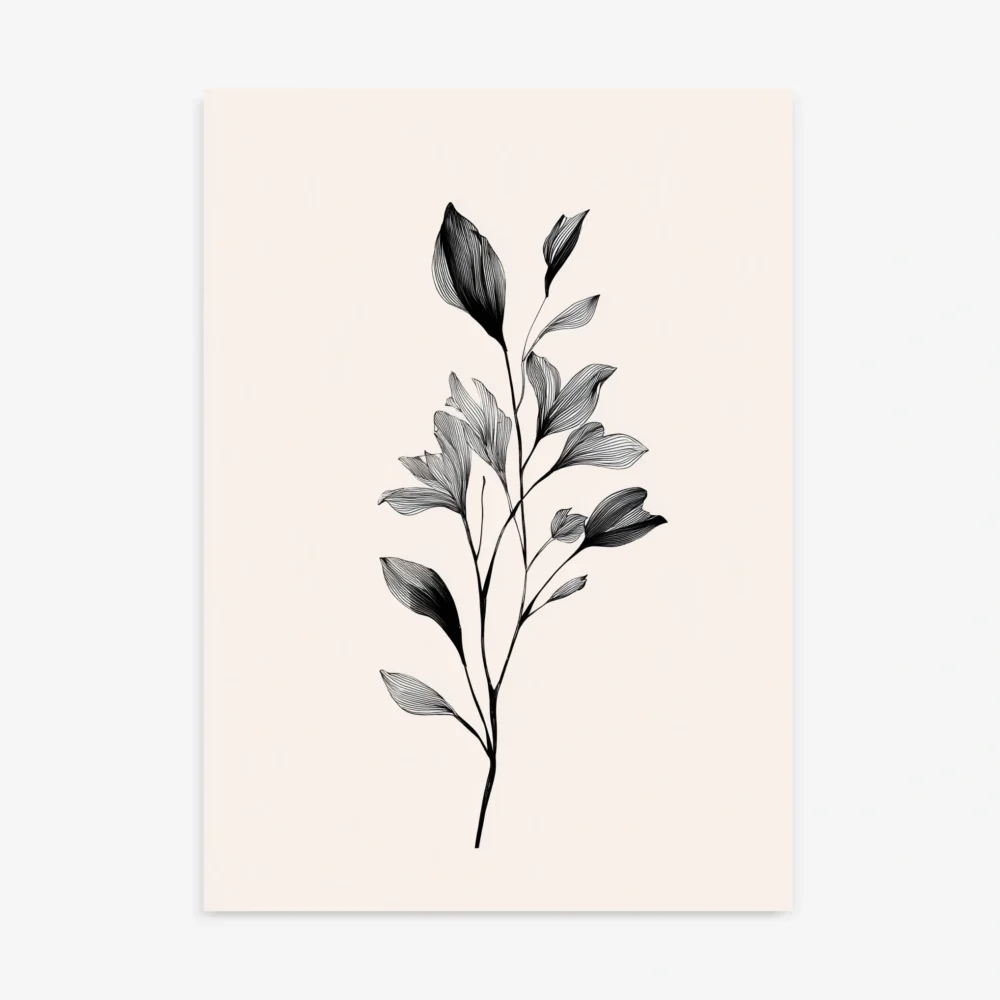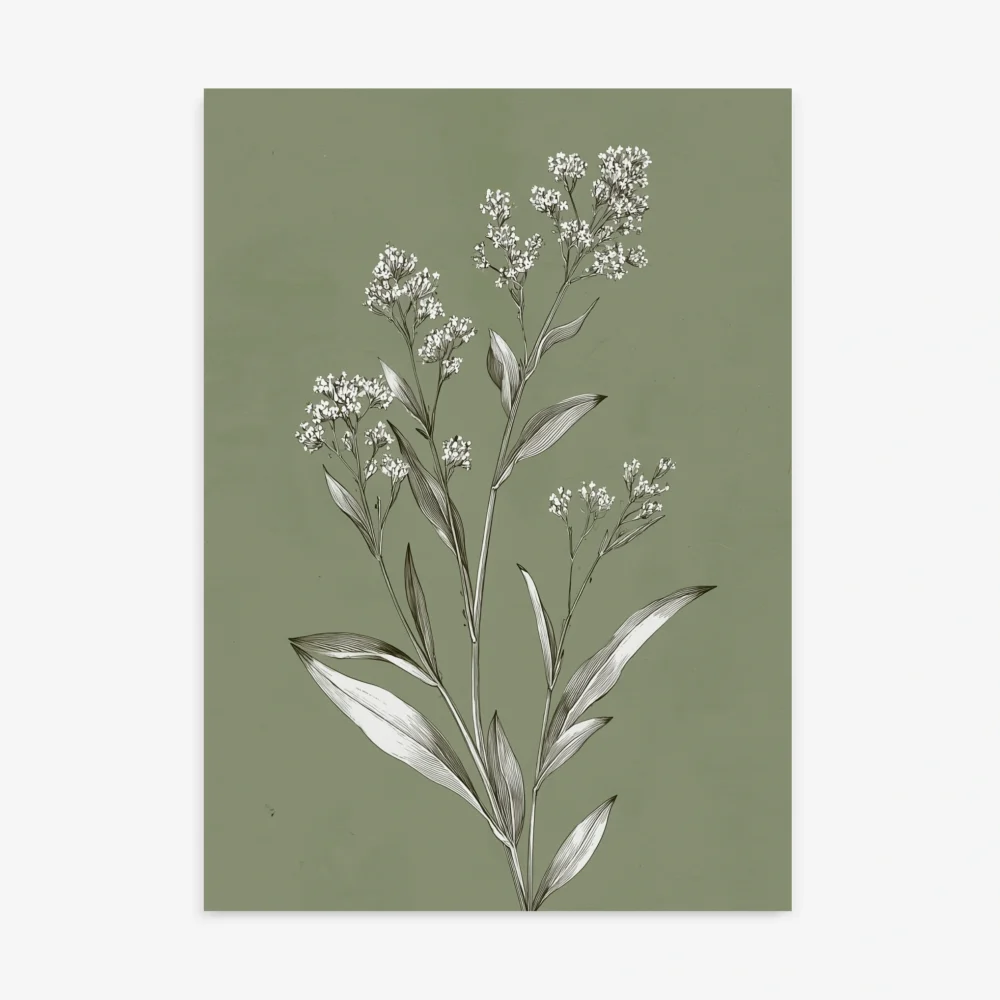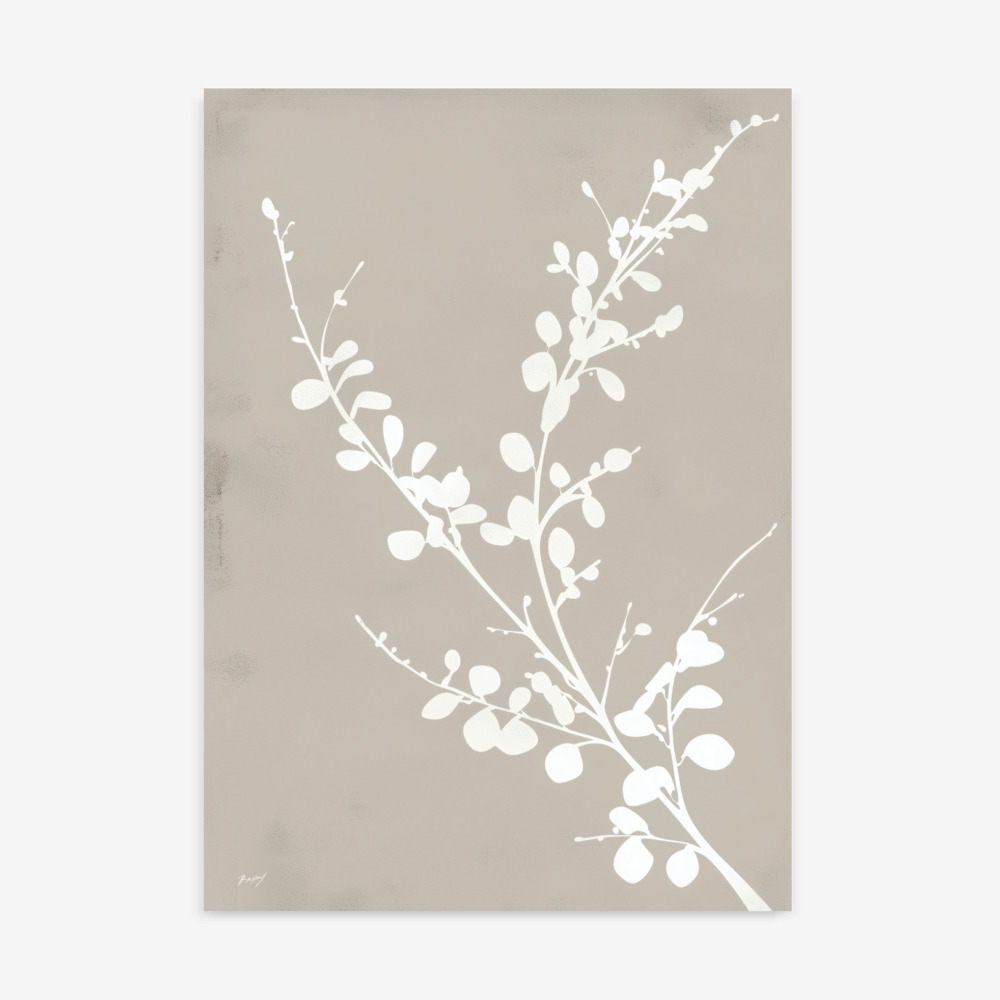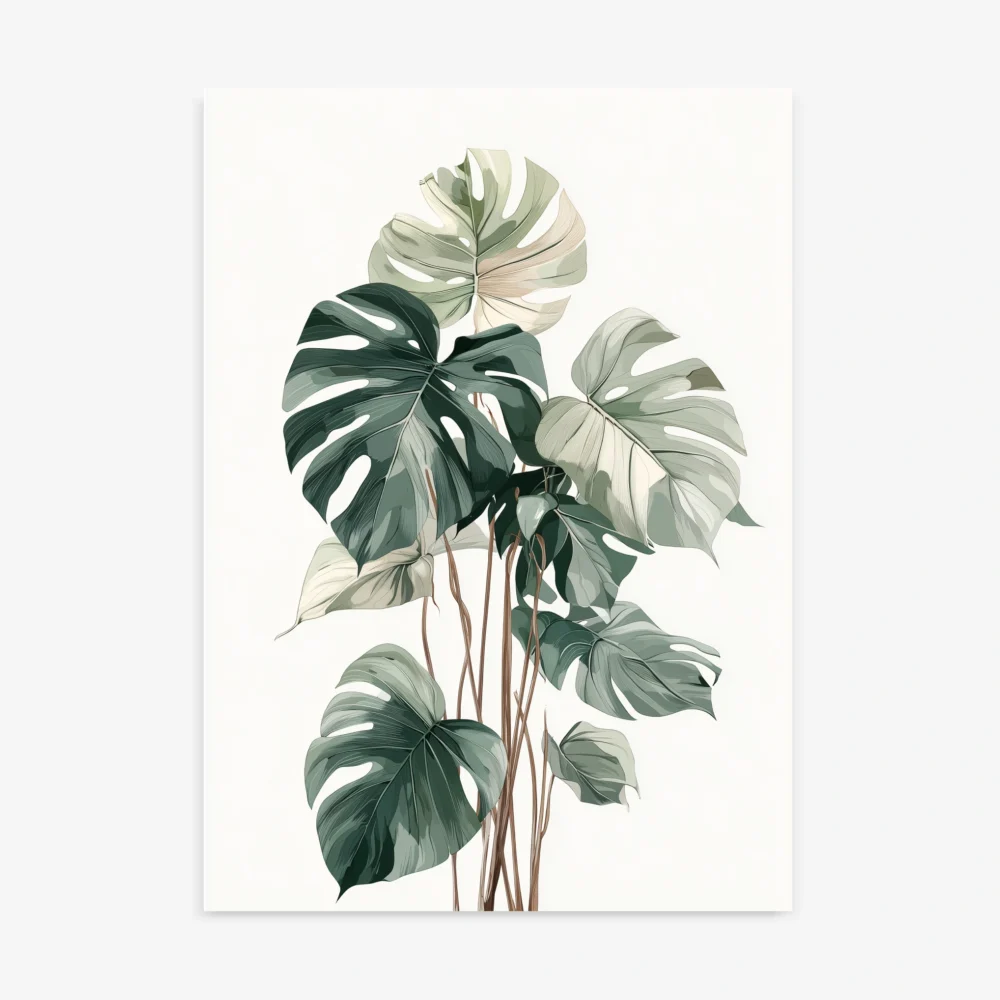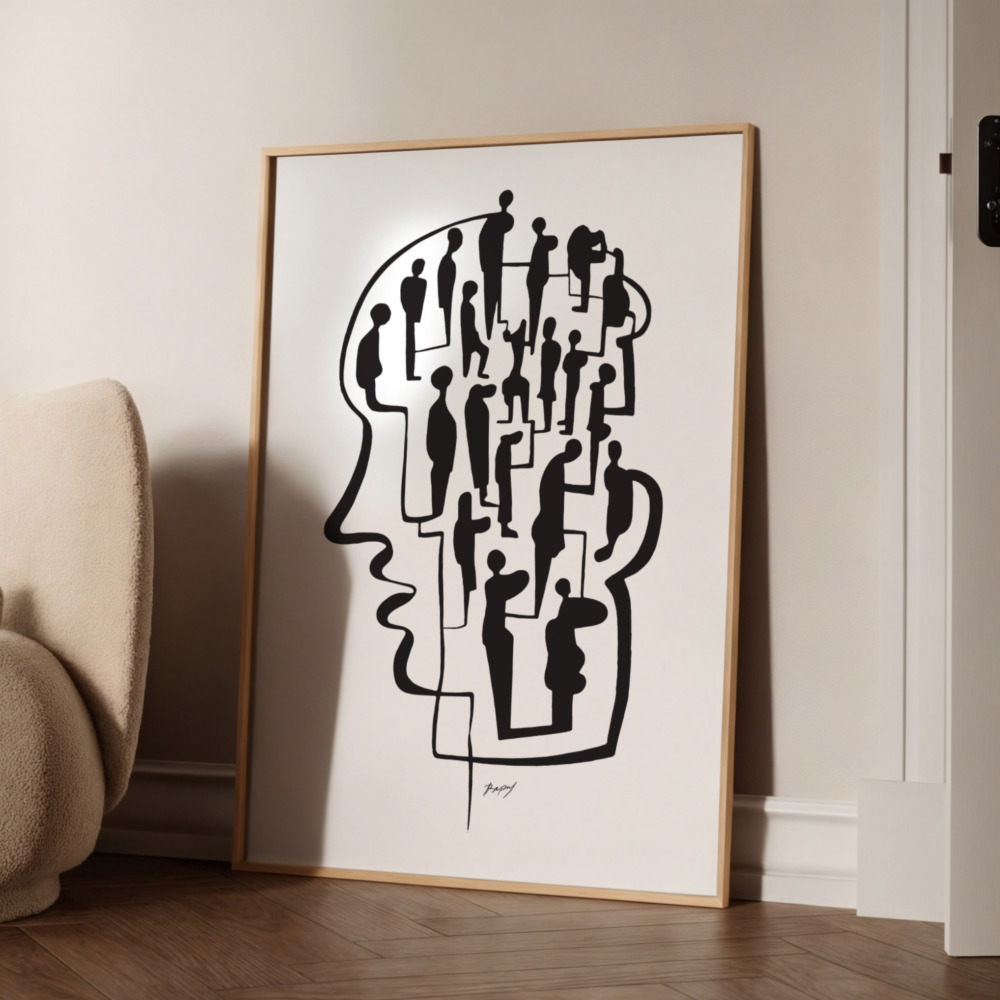There’s a reason we instinctively feel better when we’re surrounded by nature. A walk in the woods, the sight of a garden in full bloom, even a single, perfect leaf—these things have a profound ability to calm our minds and lift our spirits. This deep, innate human connection to the natural world is so powerful it even has a name: biophilia.
But let’s be realistic. Most of us can’t spend our days hiking through forests. And what if you don’t exactly have a green thumb? (We’ve all been there with a sad-looking succulent).
This is where the timeless beauty of botanical wall art comes in. It is the perfect, no-maintenance, and incredibly stylish way to satisfy that craving for nature and bring its restorative energy directly into your home.
Botanical art is more than just a pretty picture of a flower. It’s a design chameleon with a rich history, rooted in scientific illustration and centuries of human fascination with the plant kingdom. It can be modern or vintage, bold or subtle, minimalist or maximalist. It can fit into literally any room and any decor style.
This is your complete guide to unlocking its potential. We’ll explore how to choose the right pieces and offer room-by-room styling strategies to help you turn every corner of your home into a beautiful, life-affirming sanctuary.
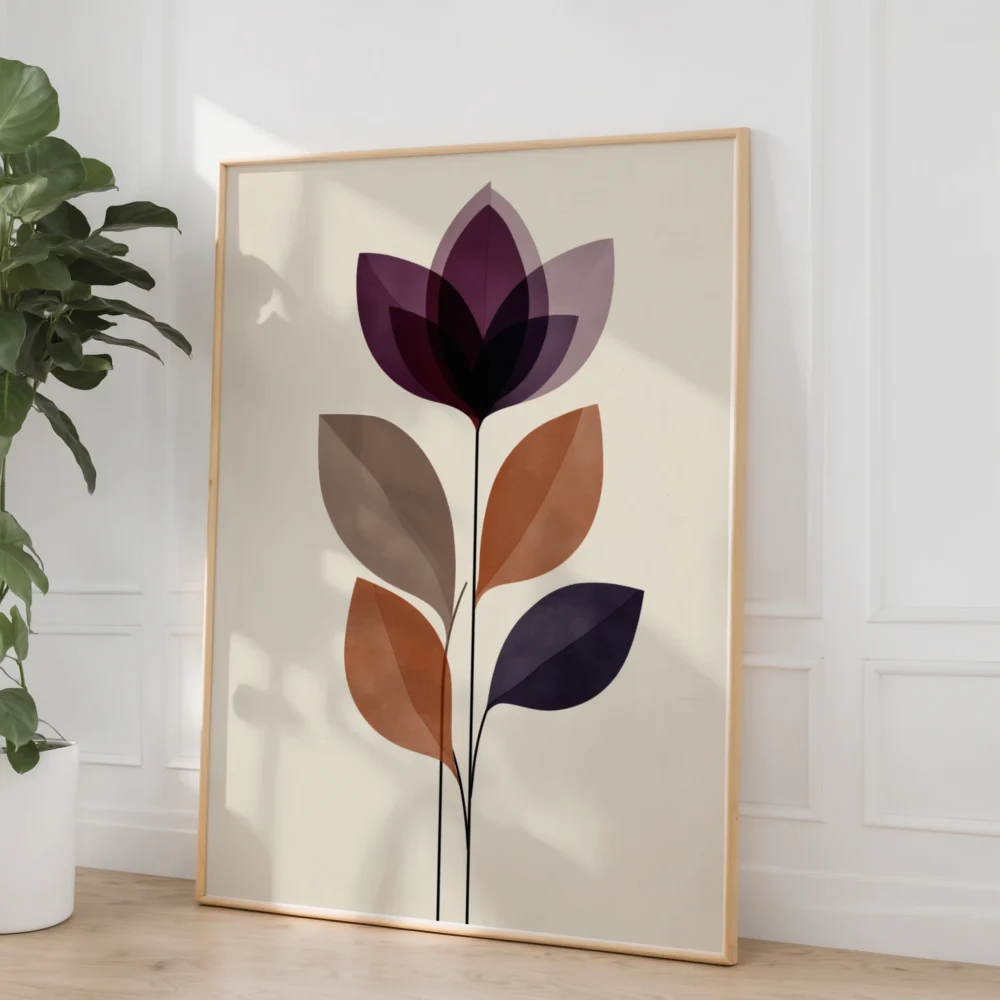
The Enduring Appeal: Why We’re All Wild About Botanical Art
Before we dive into styling, let’s appreciate why this art form is so universally loved.
-
A Connection to History and Science: Many classic botanical prints originate from the detailed, beautiful illustrations of explorers and scientists like Pierre-Joseph Redouté or John James Audubon. Hanging these pieces connects your home to a rich history of discovery and artistry, adding a layer of intellectual curiosity and old-world charm.
-
Unmatched Versatility: The term “botanical art” covers a vast universe. It can be a vintage, tea-stained drawing of a fern, a vibrant, modern photograph of a monstera leaf, a minimalist black and white line drawing of a poppy, or a moody, dark floral painting. This variety means there is a perfect piece for every single aesthetic.
-
The Wellness Factor: Numerous studies have shown that images of nature can reduce stress, improve focus, and boost our mood. By incorporating botanical art, you’re not just decorating; you’re actively creating a healthier, happier environment for yourself and your family.
The Room-by-Room Guide to a Flourishing Home
Ready to get started? Let’s take a tour of your home and discover the best ways to style botanical wall art in each unique space.
The Living Room: The Social Garden
Your living room is where you entertain guests and relax with family. The art here should be a conversation starter and a reflection of your home’s central personality.
-
The Statement Wall: This is the place to go big. A single, oversized botanical print or canvas can create a stunning focal point. A large-scale, dramatic photograph of a tropical leaf or a giant, detailed floral painting above the sofa commands attention and sets a lush, sophisticated tone.
-
The Cultivated Gallery Wall: A gallery wall of botanical prints is a timeless classic. For a formal, traditional look, create a grid of six or nine identically framed vintage prints. For a more modern or eclectic feel, mix and match different sizes, styles, and frames. You could combine a modern leaf print, a vintage floral diagram, and a black and white photograph of a tree for a dynamic, personal collection.
-
Art Styles to Consider: Large-scale photography, vintage scientific illustrations, modern abstract florals.
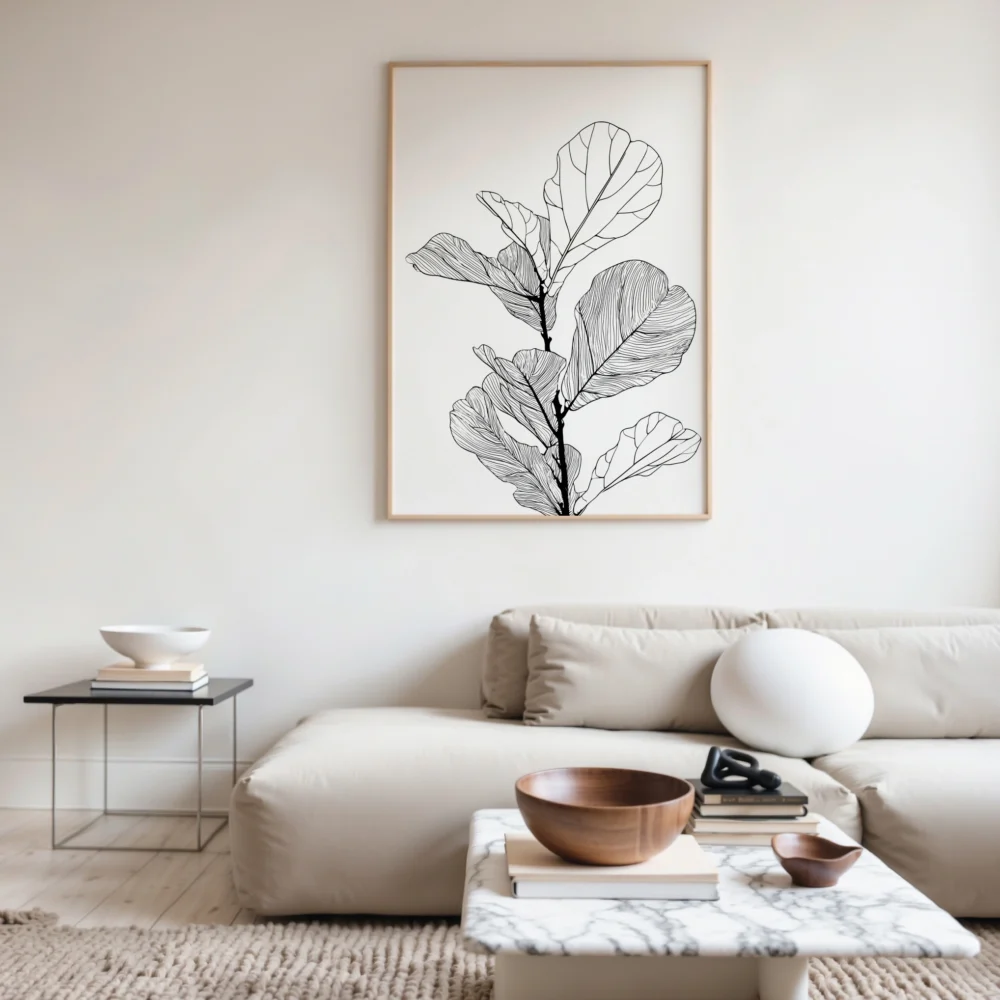
The Bedroom: The Serene Greenhouse
The bedroom is your personal sanctuary, so the art should promote rest and tranquility. Think soft, calming, and personal.
-
The Serene Diptych: A pair of complementary prints (a diptych) hung above the headboard is a classic choice that creates a sense of balance and harmony. Look for pieces with soft colors, a lot of negative space, or a gentle, flowing composition, like two wispy grass prints or watercolor florals.
-
The Minimalist Whisper: For a truly peaceful atmosphere, opt for minimalist botanical art. A simple, black and white line drawing of a single leaf or flower in a delicate frame adds a touch of organic elegance without creating visual clutter.
-
Art Styles to Consider: Minimalist line art, soft watercolor prints, black and white botanical photography, prints with muted or pastel color palettes.
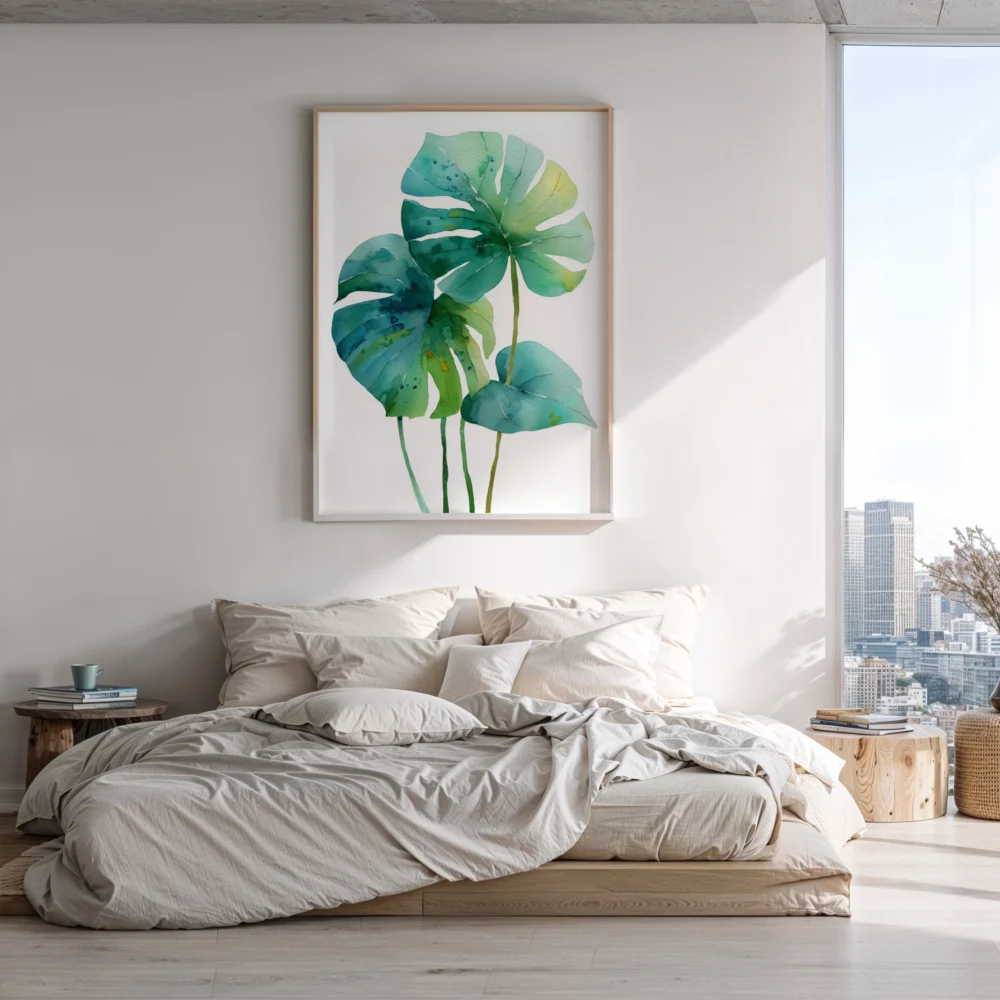
The Kitchen: The Edible Garden
The kitchen is the heart of the home, a place of nourishment and creativity. The art here can be a bit more playful and should connect to the room’s function.
-
The Herbarium Wall: What could be more fitting than a collection of botanical prints featuring herbs? A small grid of beautifully illustrated rosemary, basil, thyme, and parsley prints is both charming and thematically perfect. Hang them on a smaller wall or in the breakfast nook.
-
Vintage Orchard Charm: Vintage illustrations of fruits and vegetables add a wonderful, rustic charm. Think of old-school drawings of apples, lemons, or artichokes. These look fantastic in classic or farmhouse-style kitchens.
-
Art Styles to Consider: Herb and vegetable illustrations, vintage fruit prints, small, framed single-leaf prints.
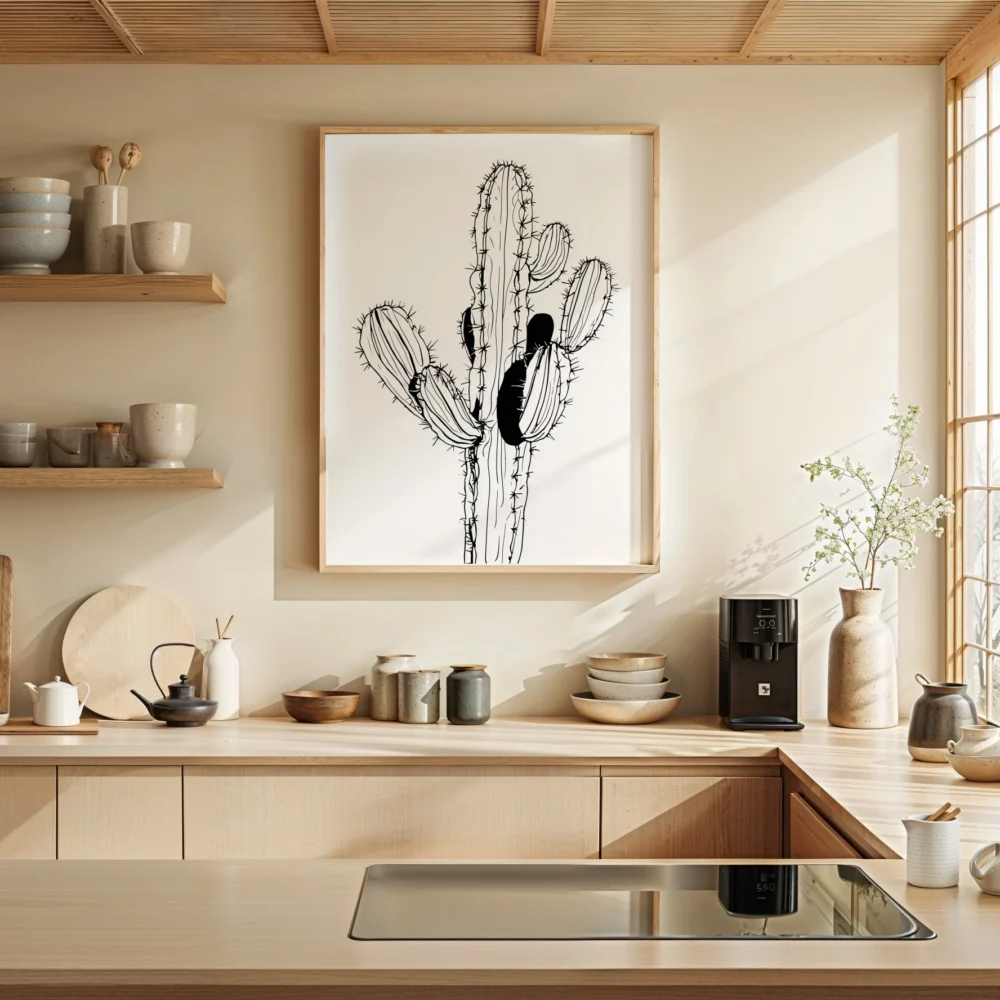
The Dining Room: The Elegant Conservatory
The dining room is often a space for more formal entertaining. The art here can be more dramatic and sophisticated to elevate the dining experience.
-
Moody & Atmospheric: A trend that is simply stunning in a dining room is dark, moody botanical art. Think of Dutch master-style floral paintings with rich, dark backgrounds. These pieces create a sense of drama, intimacy, and opulence.
-
The Cohesive Set: A matching set of four or six elegant botanical prints, hung in a symmetrical arrangement, reinforces the formal structure of a dining room. Choose prints with a shared color palette or from the same artist series for a polished, cohesive look.
-
Art Styles to Consider: Dark moody florals, classic botanical plates (from old books), elegant tree or branch studies.

The Bathroom: The Personal Spa
Transform your bathroom into a spa-like retreat with the right botanical touches. This is the perfect space to embrace a lush, tropical vibe.
-
Lush & Tropical: The humidity of a bathroom makes it the perfect thematic home for prints of tropical leaves like monstera, palm, or banana leaves. The vibrant green adds a burst of life and creates a resort-like feel.
-
A Serene Scene: A single, calming botanical photograph can turn your bath time into a visual escape. Imagine a misty forest scene or a close-up of water droplets on a leaf. It’s all about creating a Zen atmosphere.
-
A Note on Materials: When hanging art in a humid space like a bathroom, ensure it’s well-framed to protect it from moisture. Choosing a print on canvas or behind glass is a must.

The Home Office: The Garden of Focus
Your workspace should be inspiring but not distracting. Botanical art is perfect because it provides a touch of calming nature that can help improve focus.
-
The Structured Grid: A neat grid of four small botanical prints above your desk can create a sense of order and inspiration. Choose clean, simple illustrations that won’t feel visually chaotic.
-
The Single Inspiration: One beautifully framed, medium-sized print of an interesting plant or tree can serve as a “mental break” for your eyes during a long workday. It’s a small window to the outdoors that can help reduce screen fatigue.
-
Art Styles to Consider: Clean and simple botanical diagrams, black and white leaf prints, pressed flower-style art.

Practical Artistry: Your Toolkit for Perfect Placement and Styling
Choosing the right art is the first step. Here’s how to present it like a pro.
1. Framing Makes All the Difference
The frame you choose can completely alter the personality of your botanical print.
-
Classic Black or White: Simple and timeless. A black frame adds a touch of graphic contrast, while a white frame feels fresh and airy. Both let the artwork be the star.
-
Natural Wood: Light wood frames (like oak or maple) add warmth and are perfect for Scandinavian, coastal, or modern farmhouse styles. They enhance the natural, organic feel of the art.
-
Metallic (Gold, Brass, Silver): A thin gold or brass frame adds a touch of glamour and sophistication, beautifully elevating a simple print. Silver is a cooler, more modern alternative.
-
Vintage & Ornate: An ornate, vintage-style frame can create a stunning juxtaposition when paired with a modern print, or it can enhance the historical feel of a classic illustration.
2. Master the Layout
How you arrange your art is just as important as the art itself.
-
The Single Statement: One large piece. Simple, bold, and effective.
-
The Symmetrical Grid: Multiple pieces of the same size, arranged in a perfect grid. Clean, classic, and orderly.
-
The Diptych or Triptych: Two or three pieces from a series, hung side-by-side. Creates a panoramic, cohesive feel.
-
The Organic Gallery Wall: A mix of sizes, orientations, and even frame styles. The key to making it work is finding a common thread—like a shared color palette or the botanical theme itself.
3. Harmony with Your Color Palette
Choose botanical art that complements your existing decor.
-
For Neutral Rooms: A black and white botanical drawing or a print with muted, earthy tones will add interest without disrupting the calm.
-
For Colorful Rooms: You can either choose art that picks up on one of the accent colors in your room for a cohesive look, or use a simple green leaf print, as green often acts as a “neutral” in design.
Your Home in Full Bloom
Botanical wall art is so much more than a trend. It’s a timeless celebration of the natural world and a powerful tool for creating a home that not only looks beautiful but feels good, too. It’s an affirmation of life, growth, and the simple, elegant beauty that surrounds us.
So, start small. Find one print that speaks to you. A simple fern, a vibrant flower, a majestic tree. Hang it in a room that needs a little life, and watch how it transforms the space. You’re not just hanging a picture; you’re planting a seed of tranquility.

